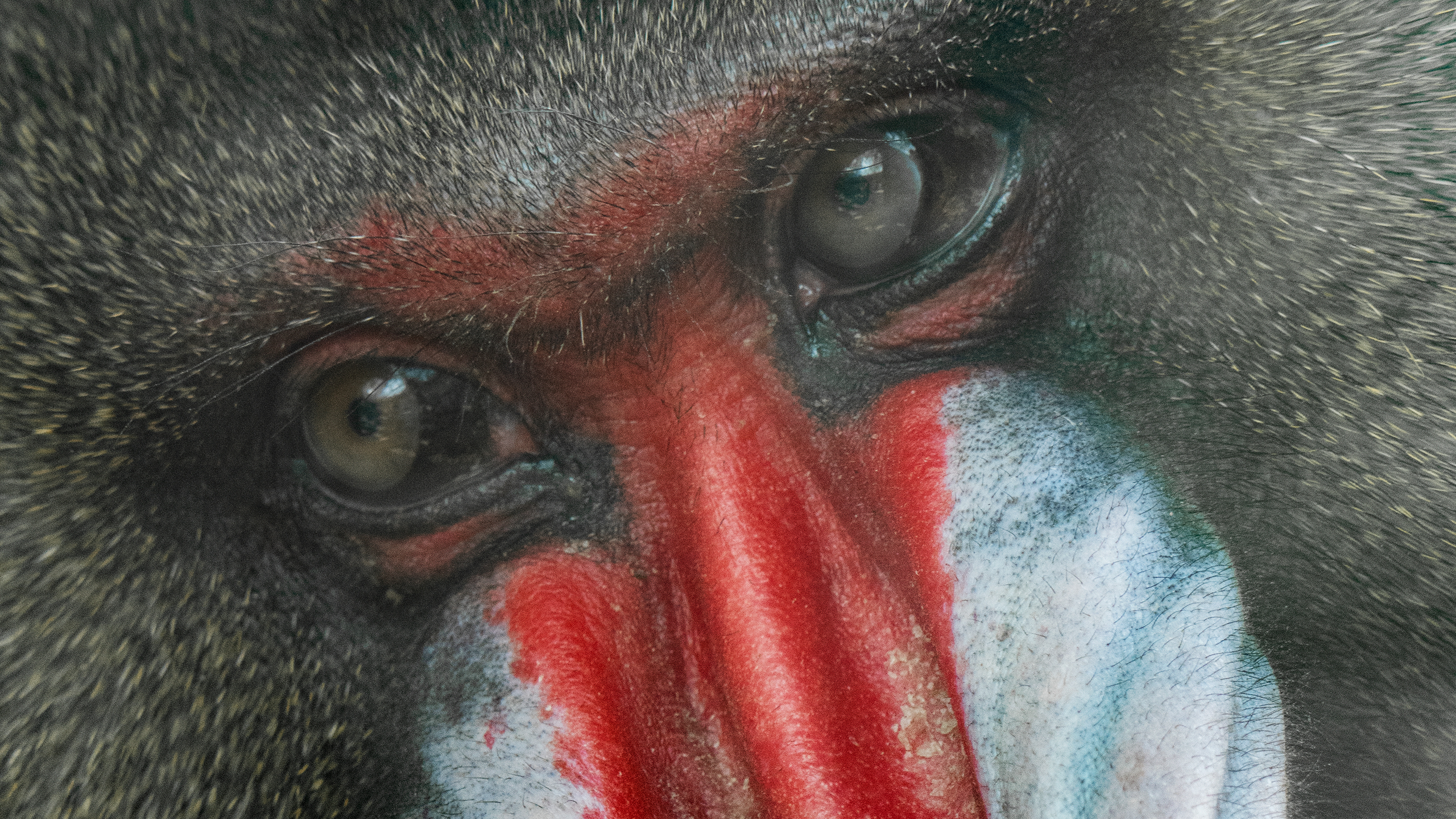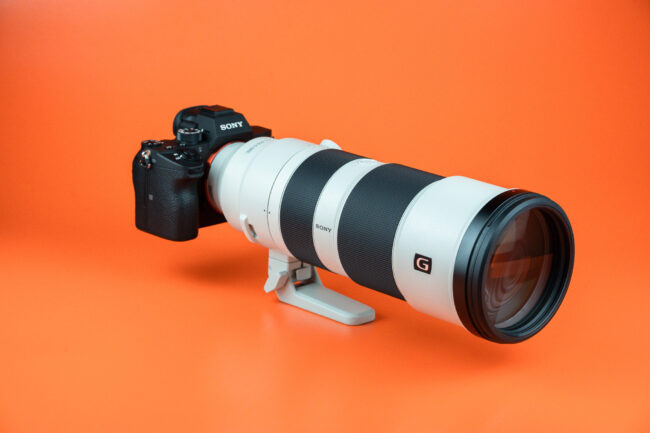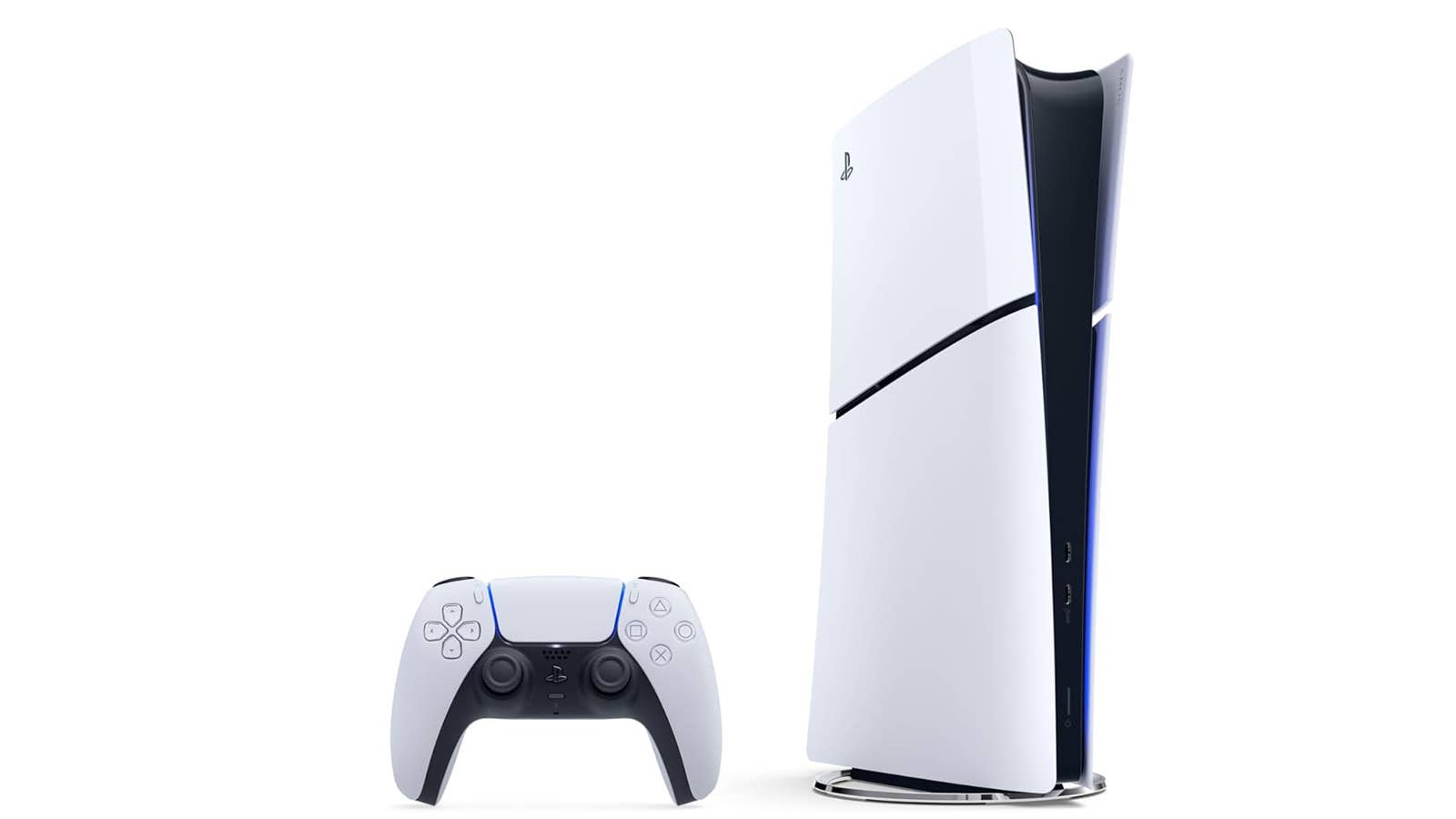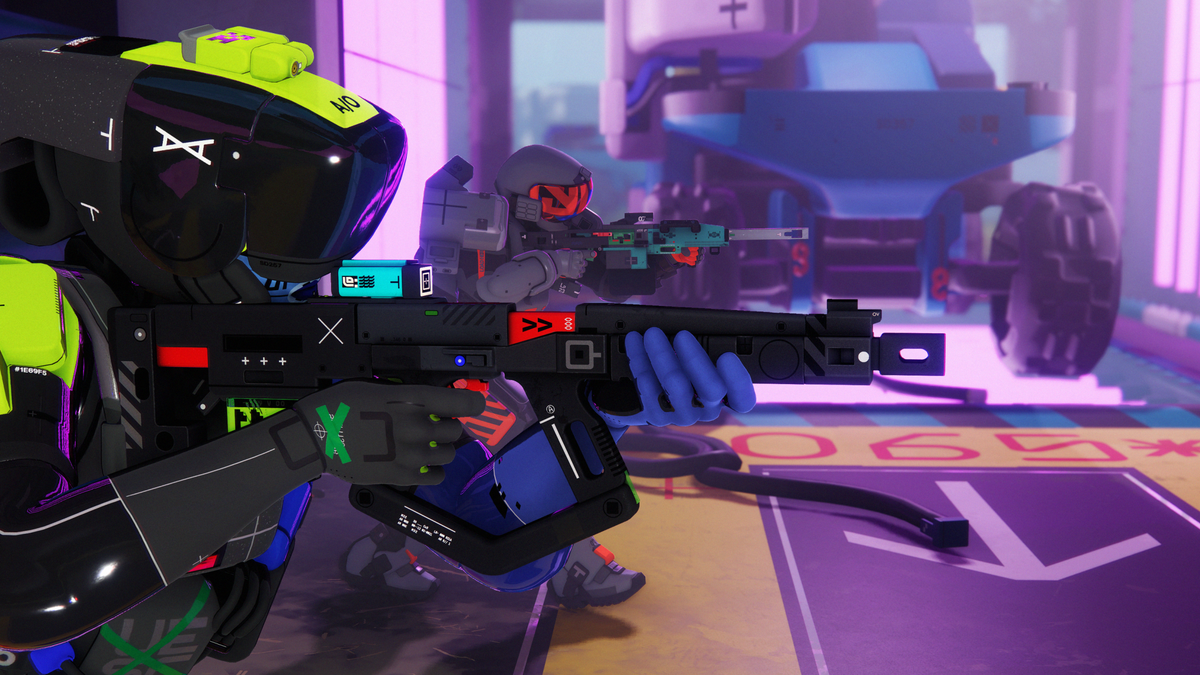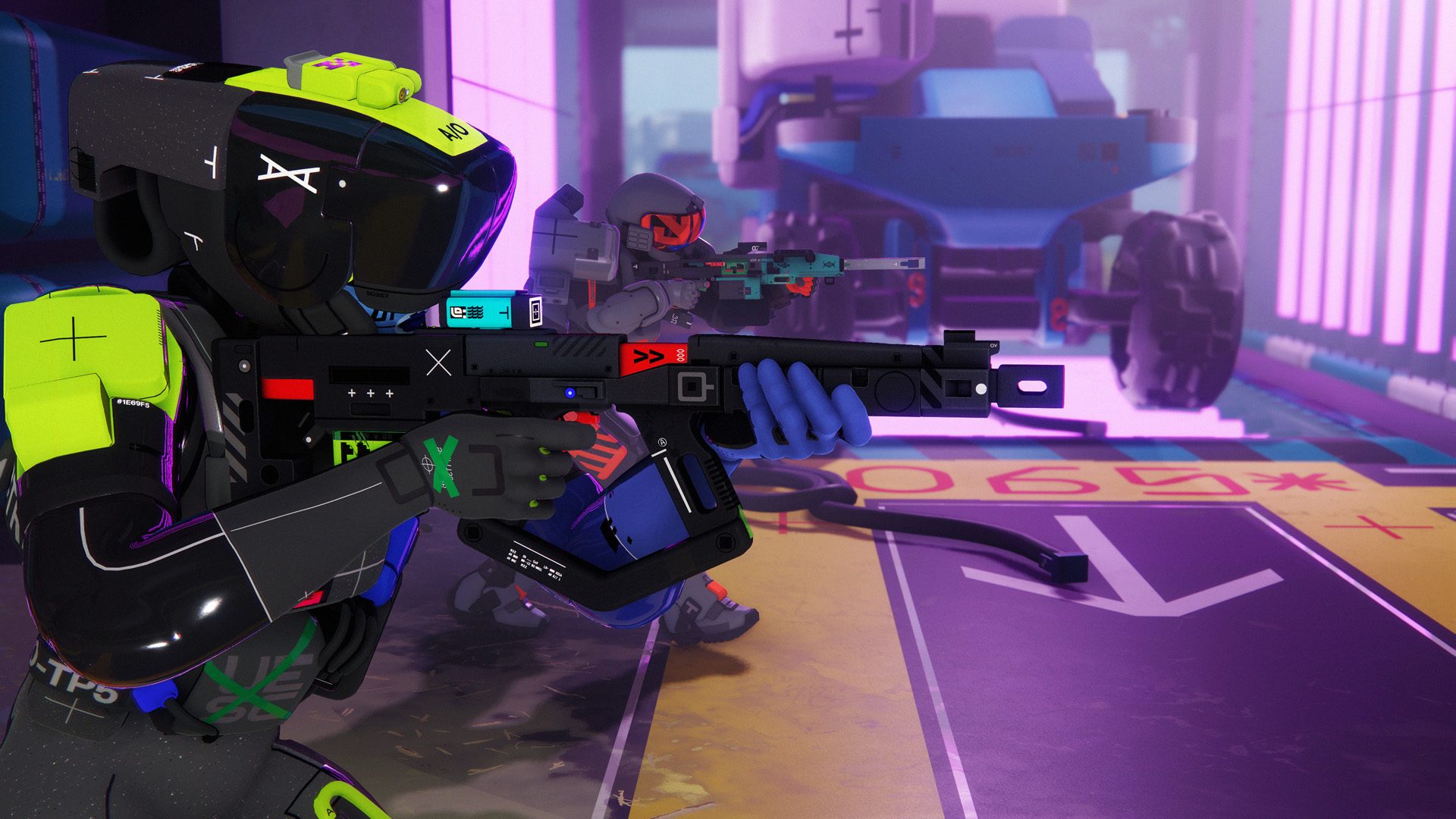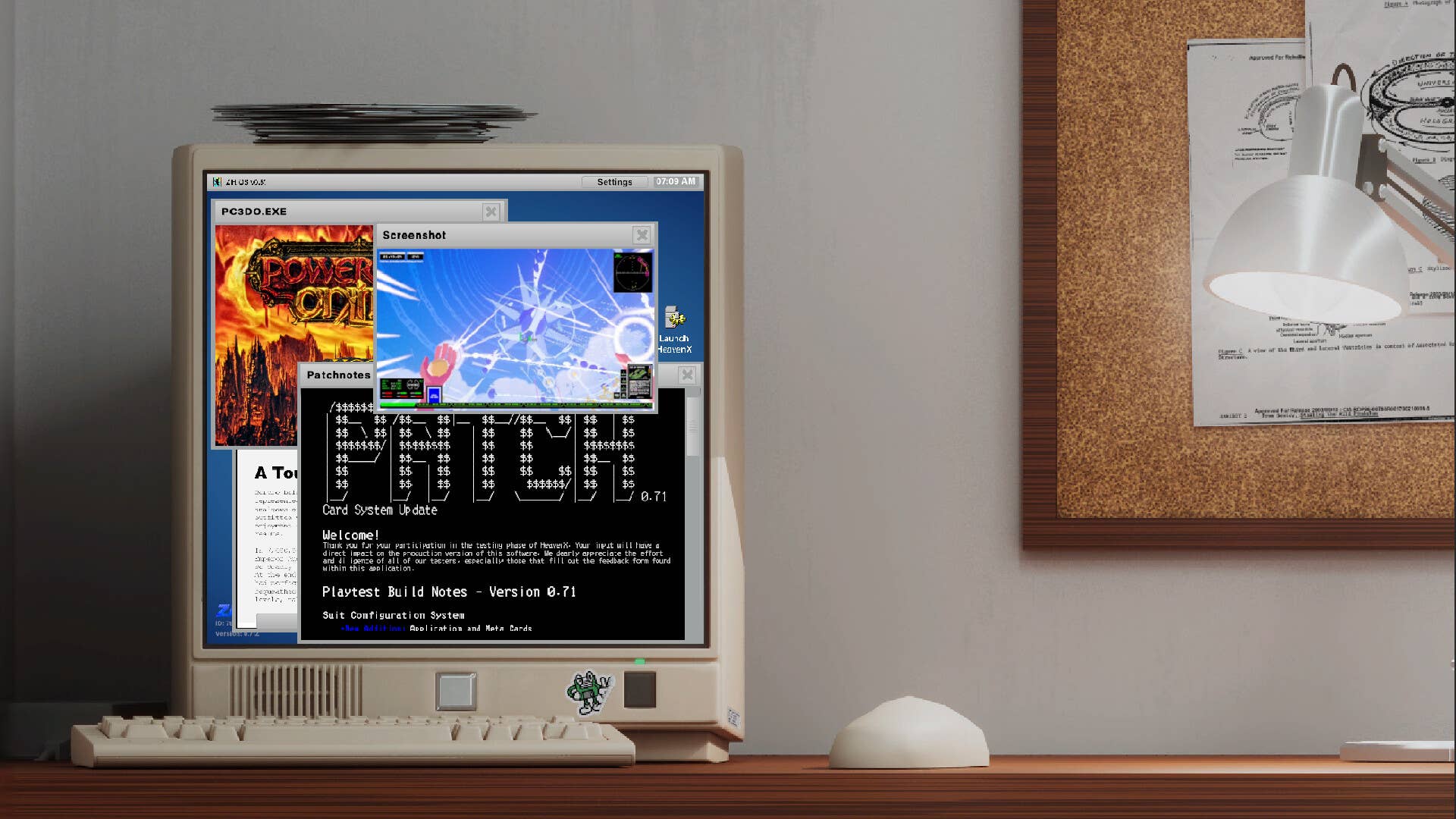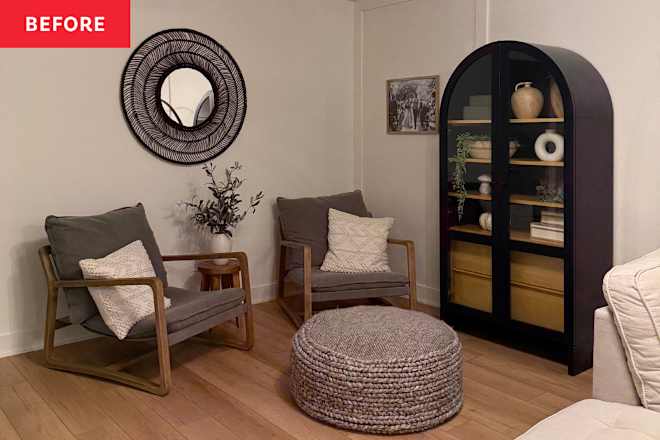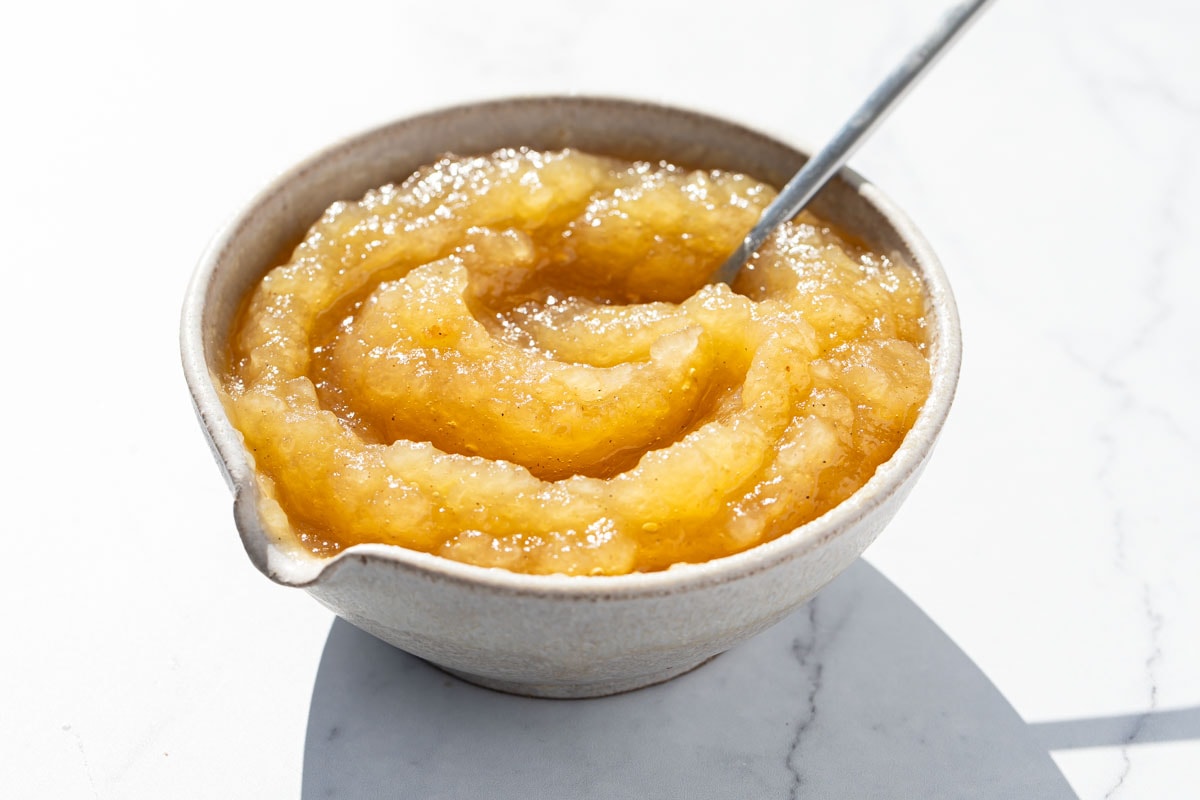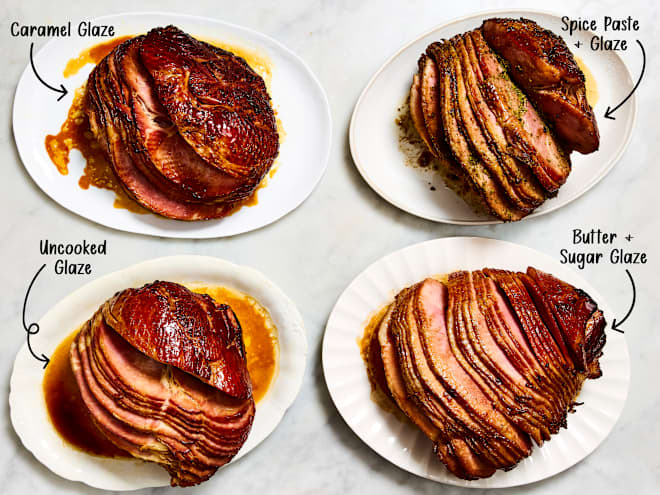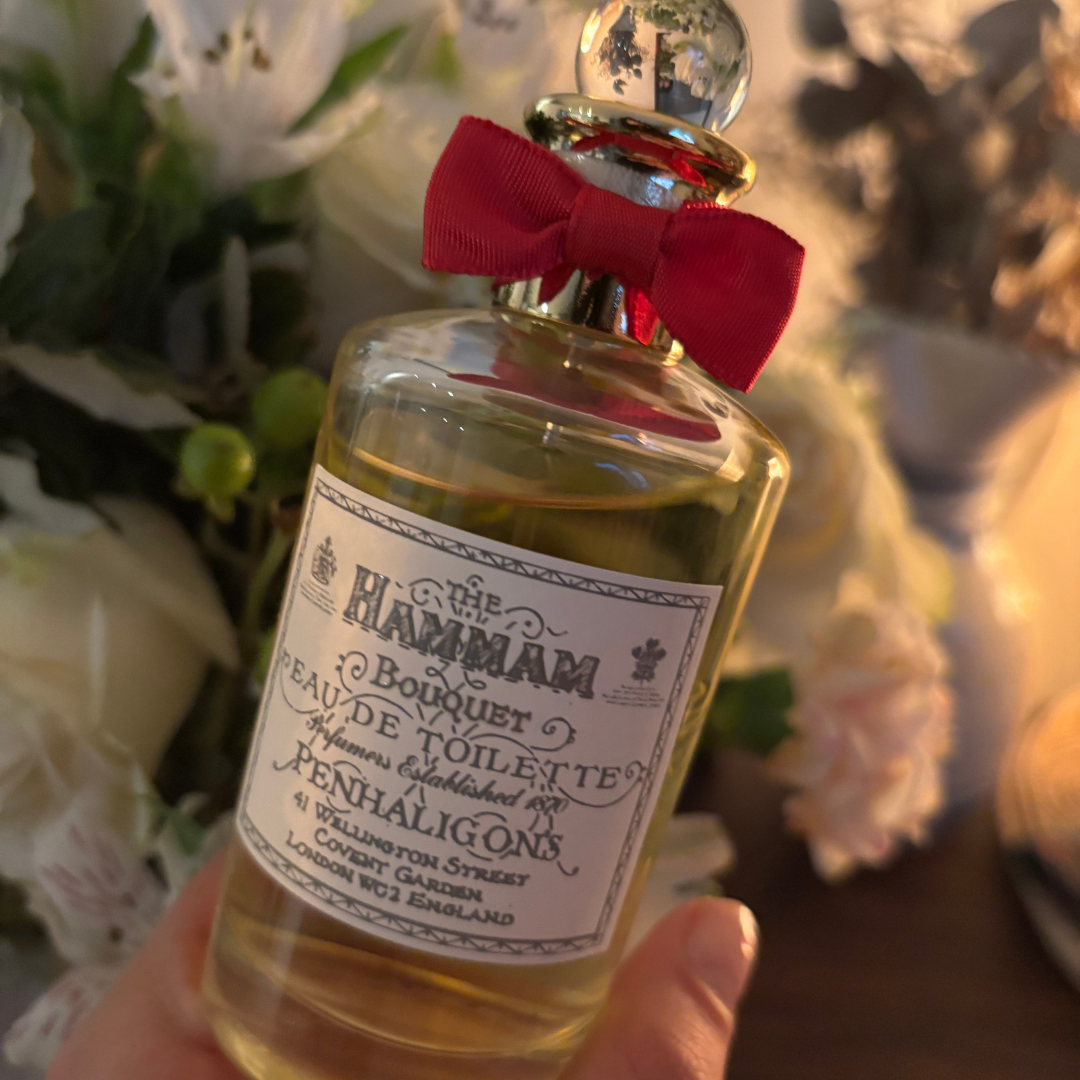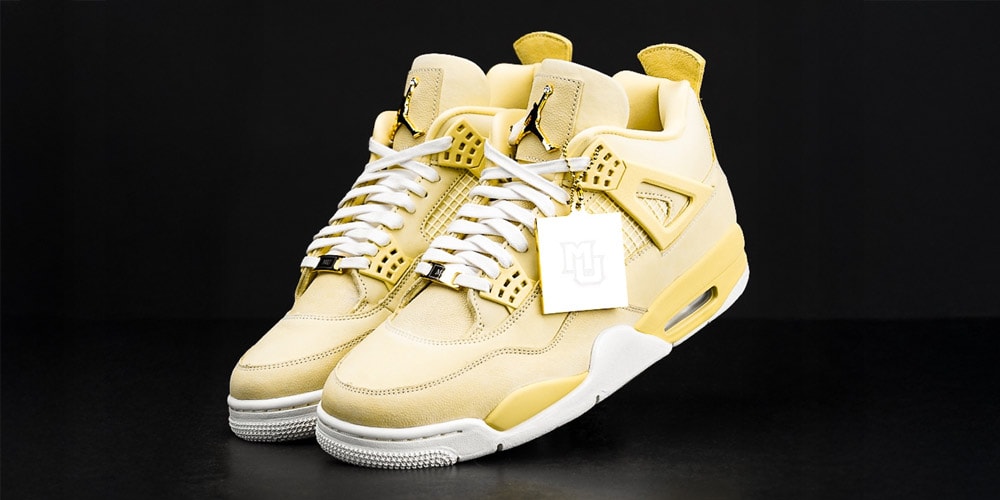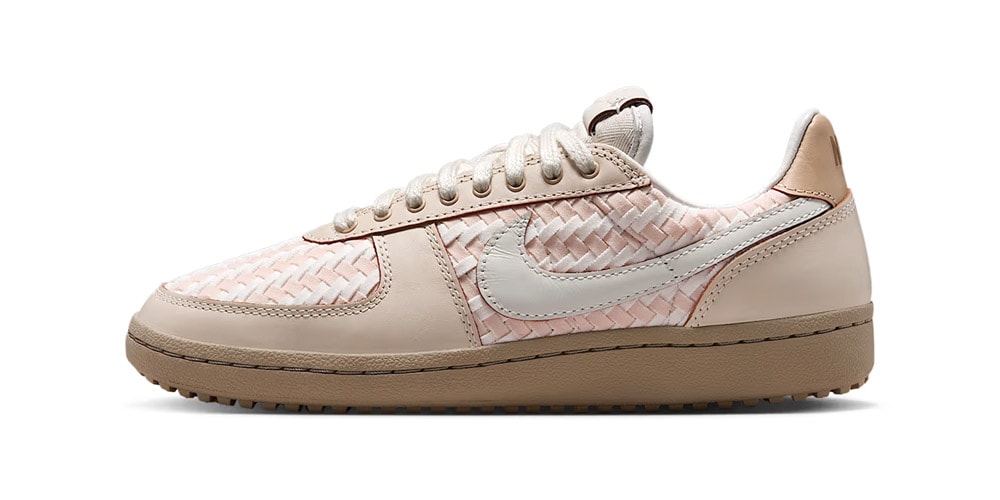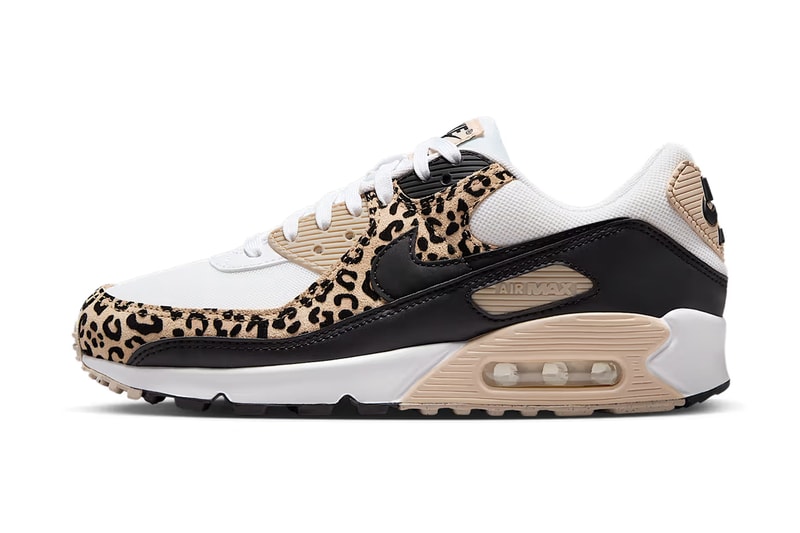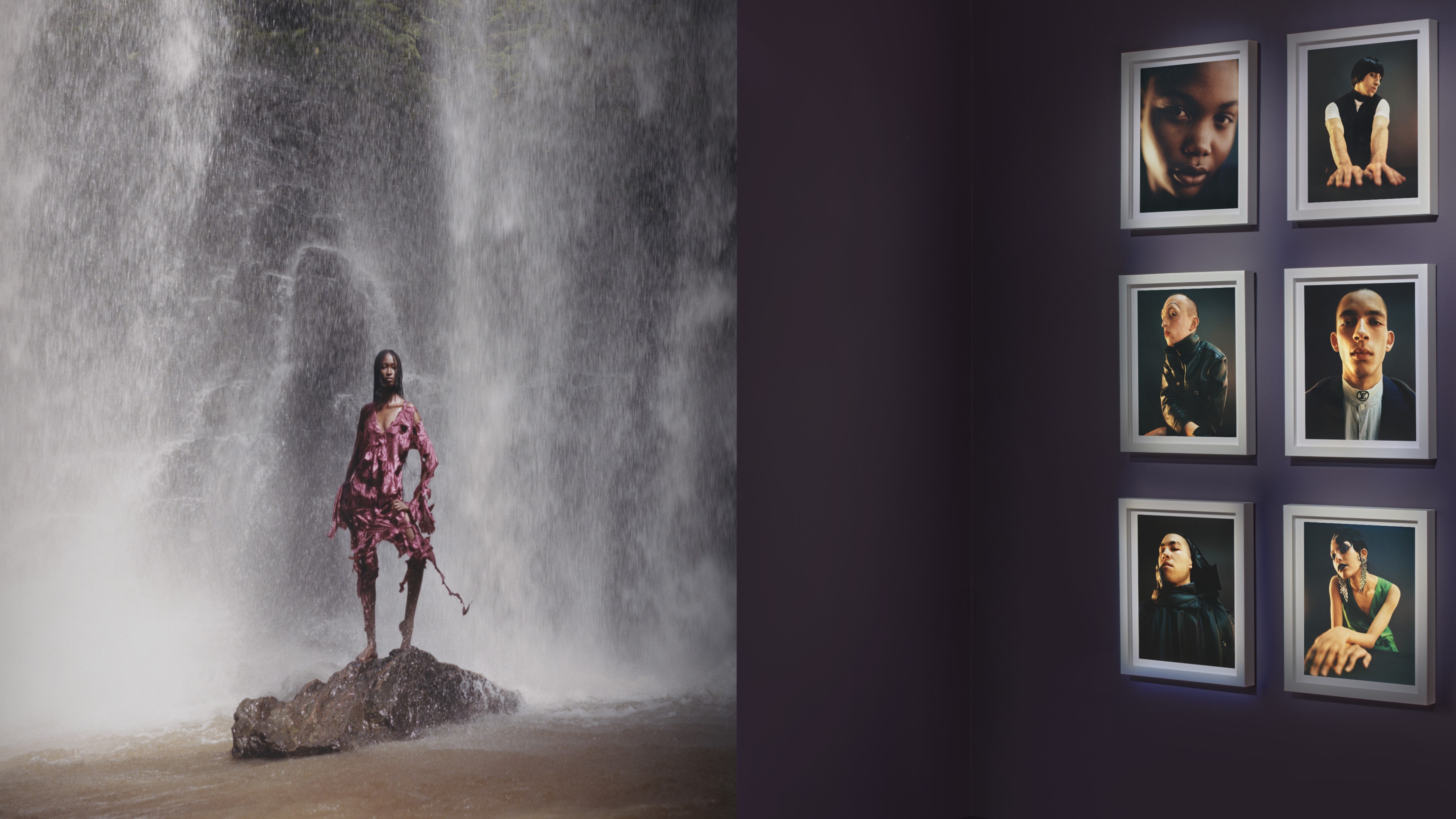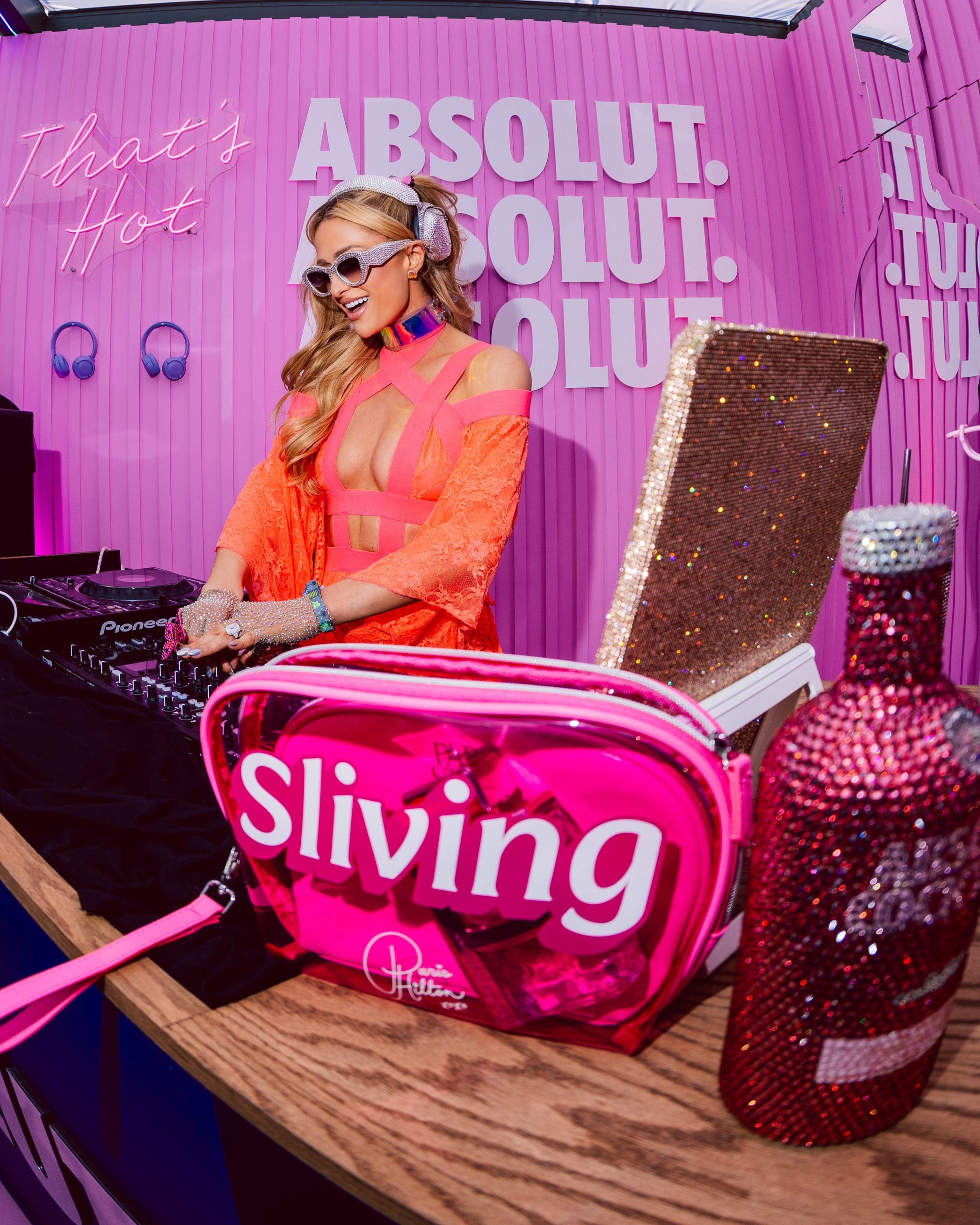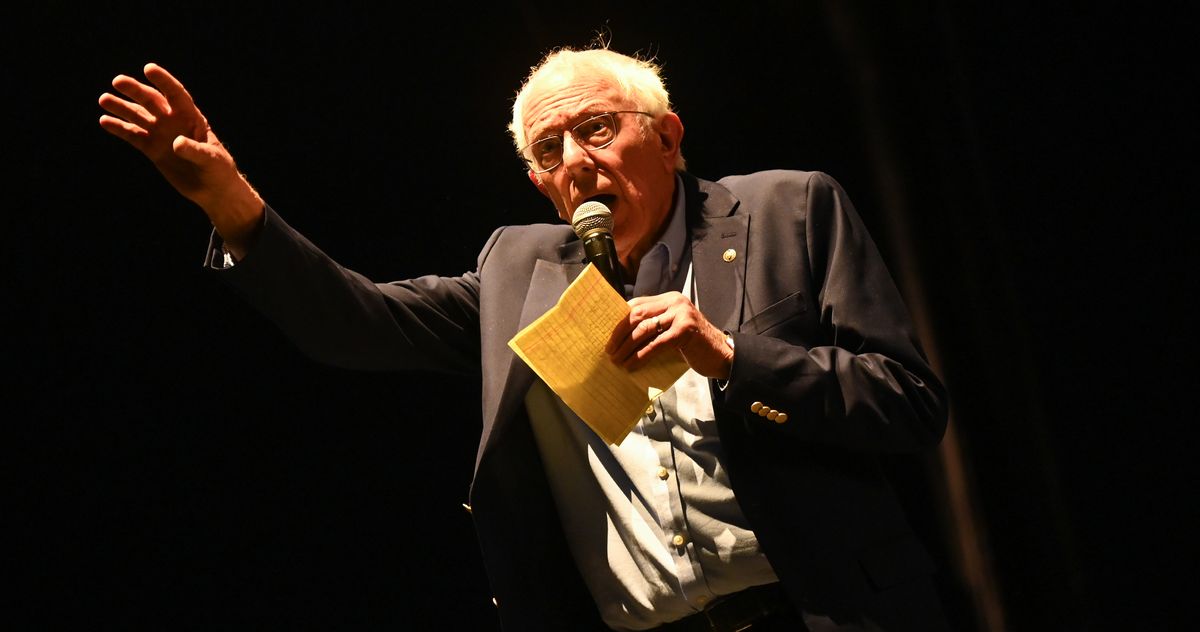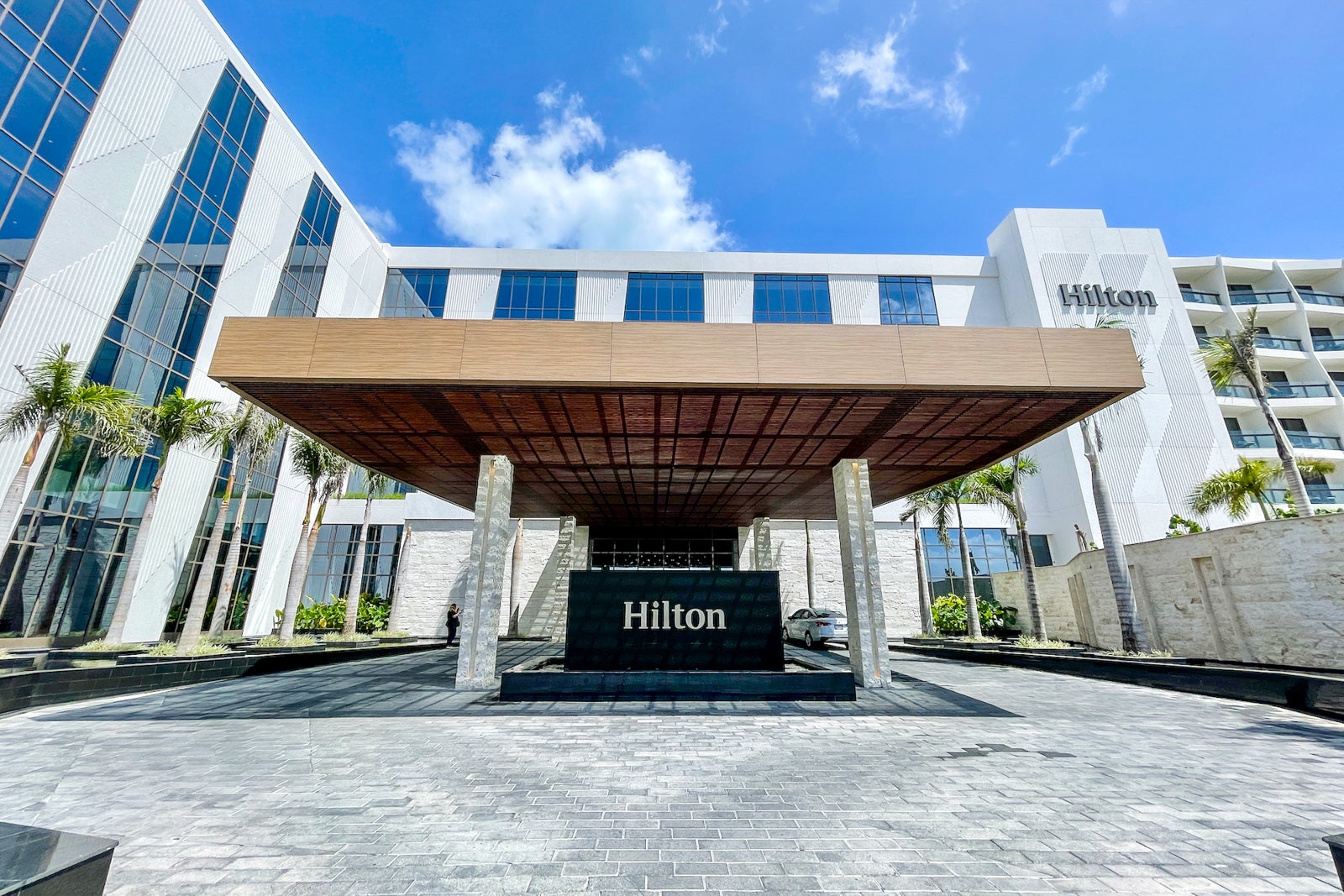‘Cheap chic’: How JetBlue’s 25 years of flying helped reshape US aviation
Rewind a quarter-century, and it was an unglamorous time for air travel in the U.S. Some two decades after Congress deregulated the industry, gone were the glory days of inflight service at the likes of Pan Am; few passengers held rosy views of the large network airlines, from Delta, American and United to other since-shuttered …

Rewind a quarter-century, and it was an unglamorous time for air travel in the U.S.
Some two decades after Congress deregulated the industry, gone were the glory days of inflight service at the likes of Pan Am; few passengers held rosy views of the large network airlines, from Delta, American and United to other since-shuttered brands like TWA, Continental and US Airways.
It wasn’t much better at the largely no-frills low-cost airlines where, despite the perennial success of Southwest Airlines, few carriers stood out for their on-board amenities.
But just after the turn of the century, an upstart entrant arrived on the U.S. airline stage with new jets, more legroom and those seatback screens with live television that remain synonymous with JetBlue today.
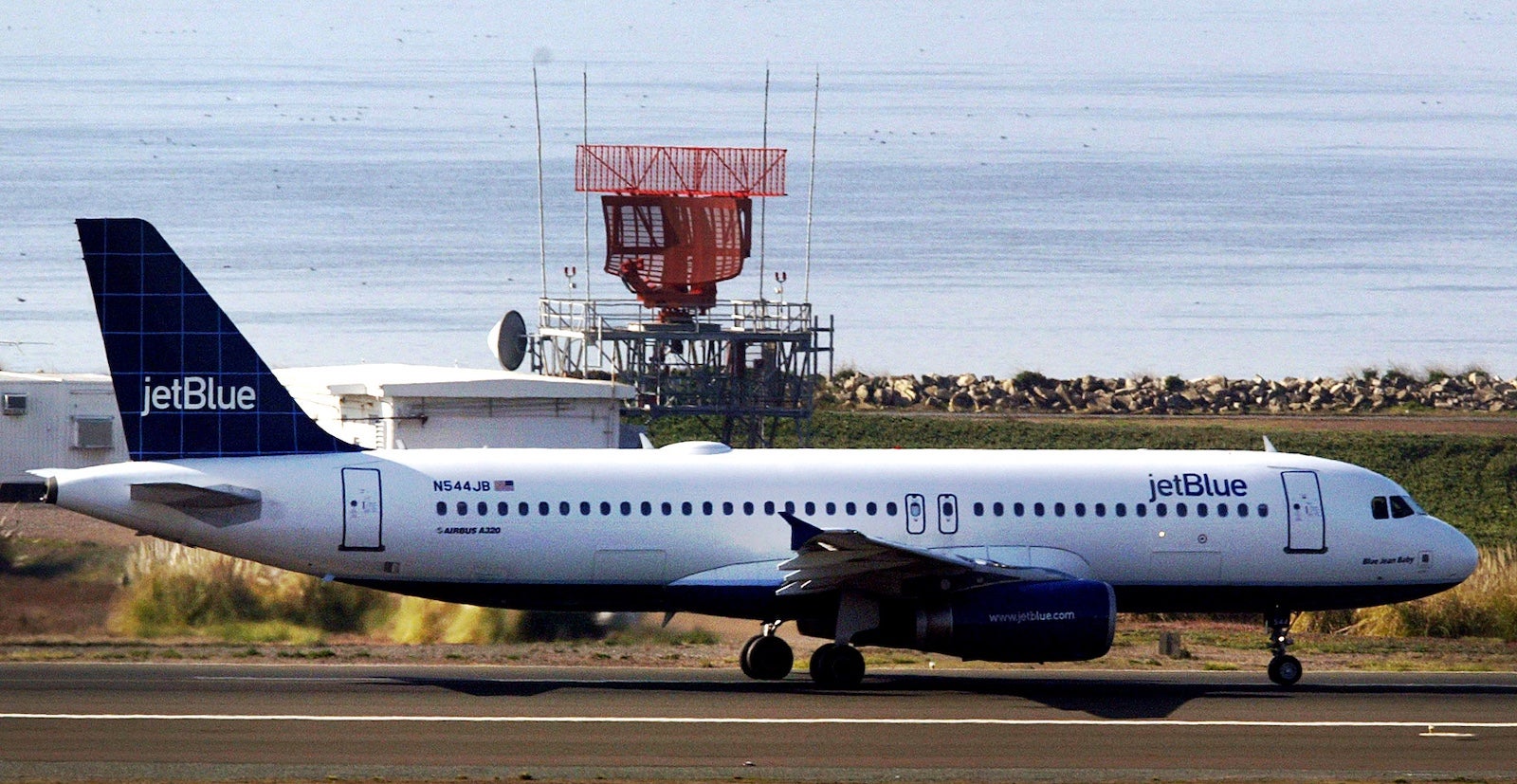
“It’s an understatement to say that they were a breath of fresh air,” industry analyst Henry Harteveldt, president of Atmosphere Research Group, recalled. “They were … a completely different type of airline that made the entire industry sit up and take notice.”
Celebrating 25 years
Walking into Terminal 5 at New York’s John F. Kennedy International Airport (JFK) on its hometown airline’s 25th birthday, it was impossible not to take notice of the occasion.
Just after the security checkpoint, balloons formed a giant “25.”
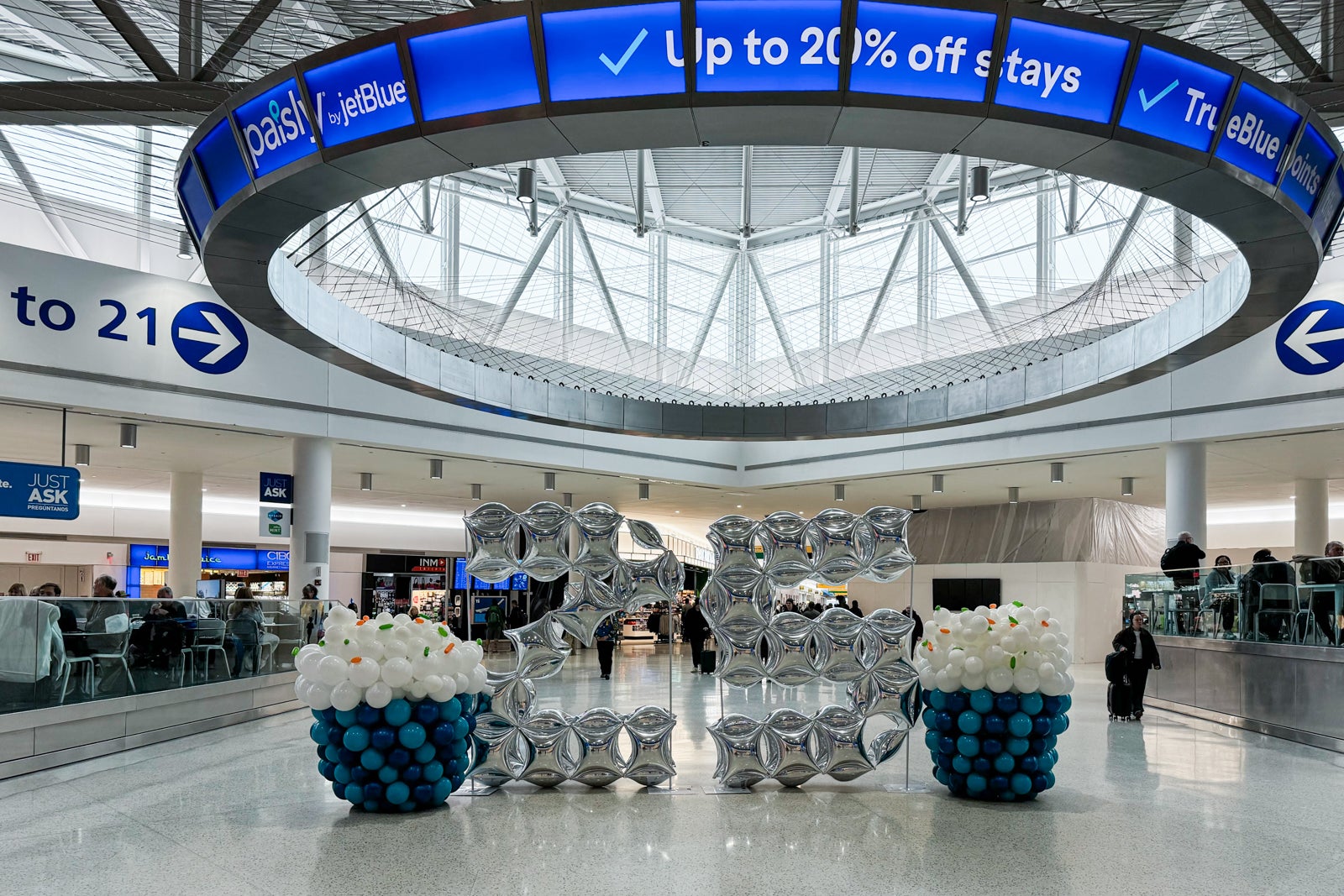
Along the concourse, music from Shania Twain, Britney Spears and Faith Hill offered a throwback to the days when the term “Y2K” was still fresh in America’s collective vocabulary.
A makeshift exhibit of inflight menus, aircraft safety cards, uniforms and memorabilia from past JetBlue milestones helped tell the story of the airline’s first quarter-century in operation — and the bevy of cakes and sweets made it a true birthday party.
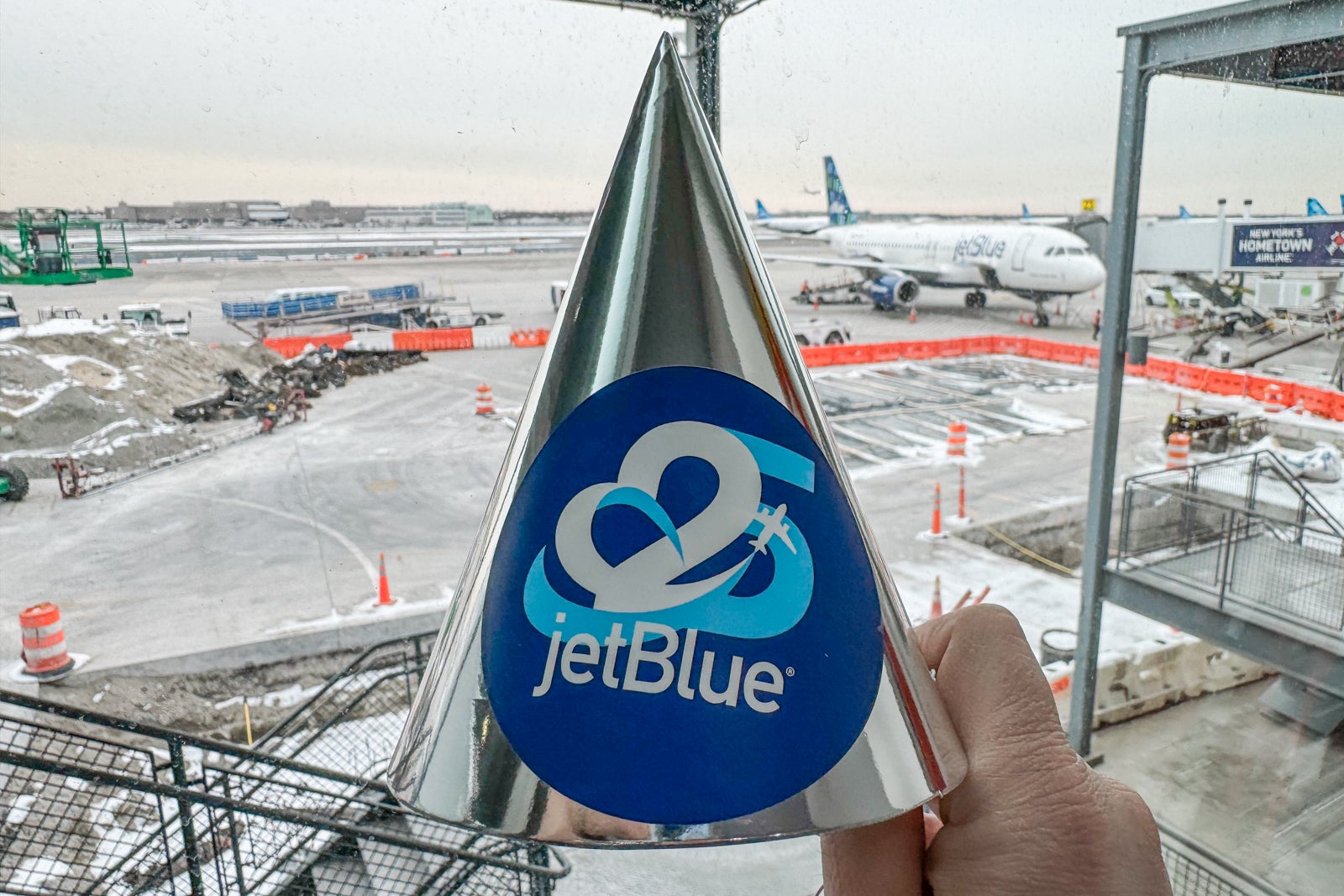
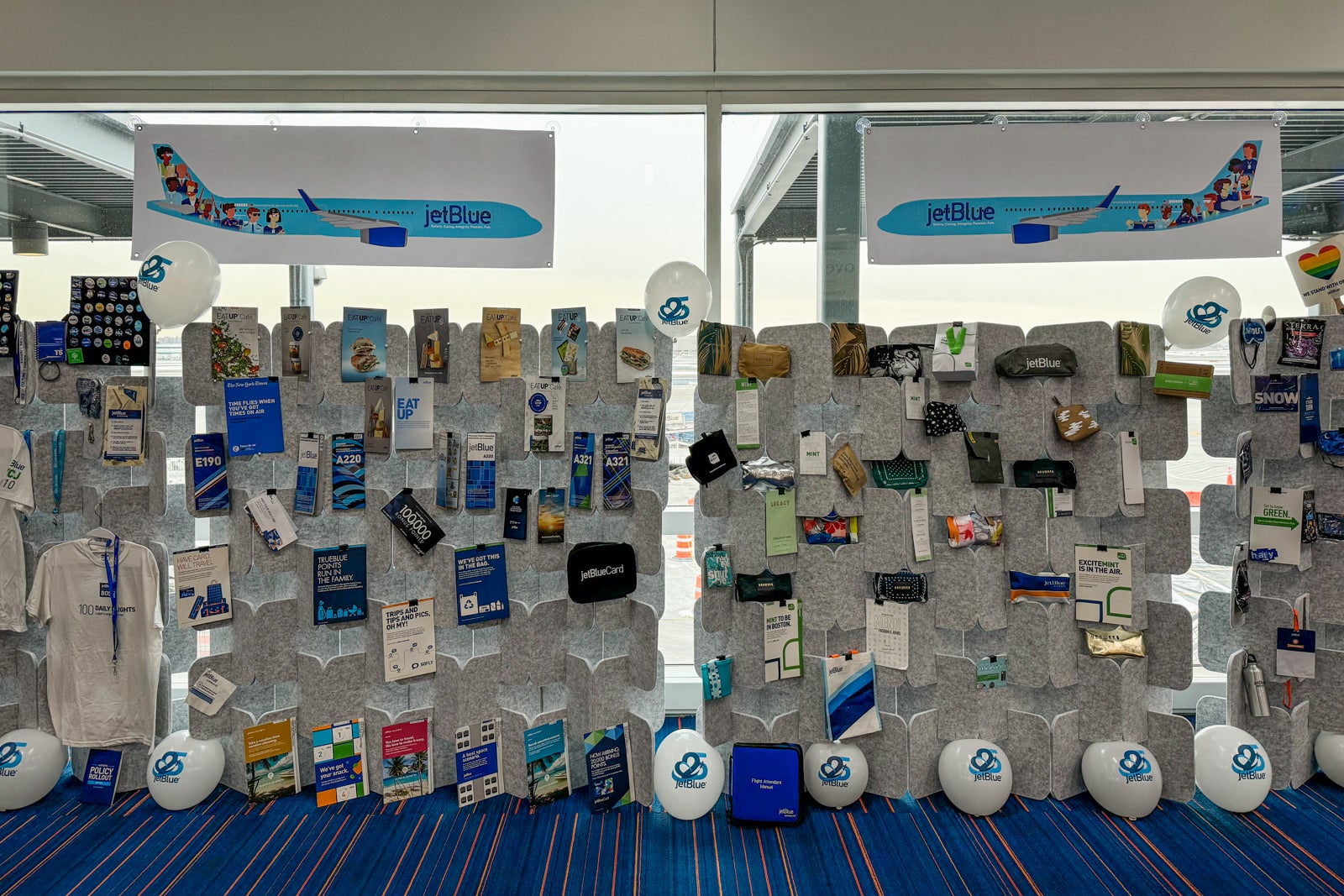
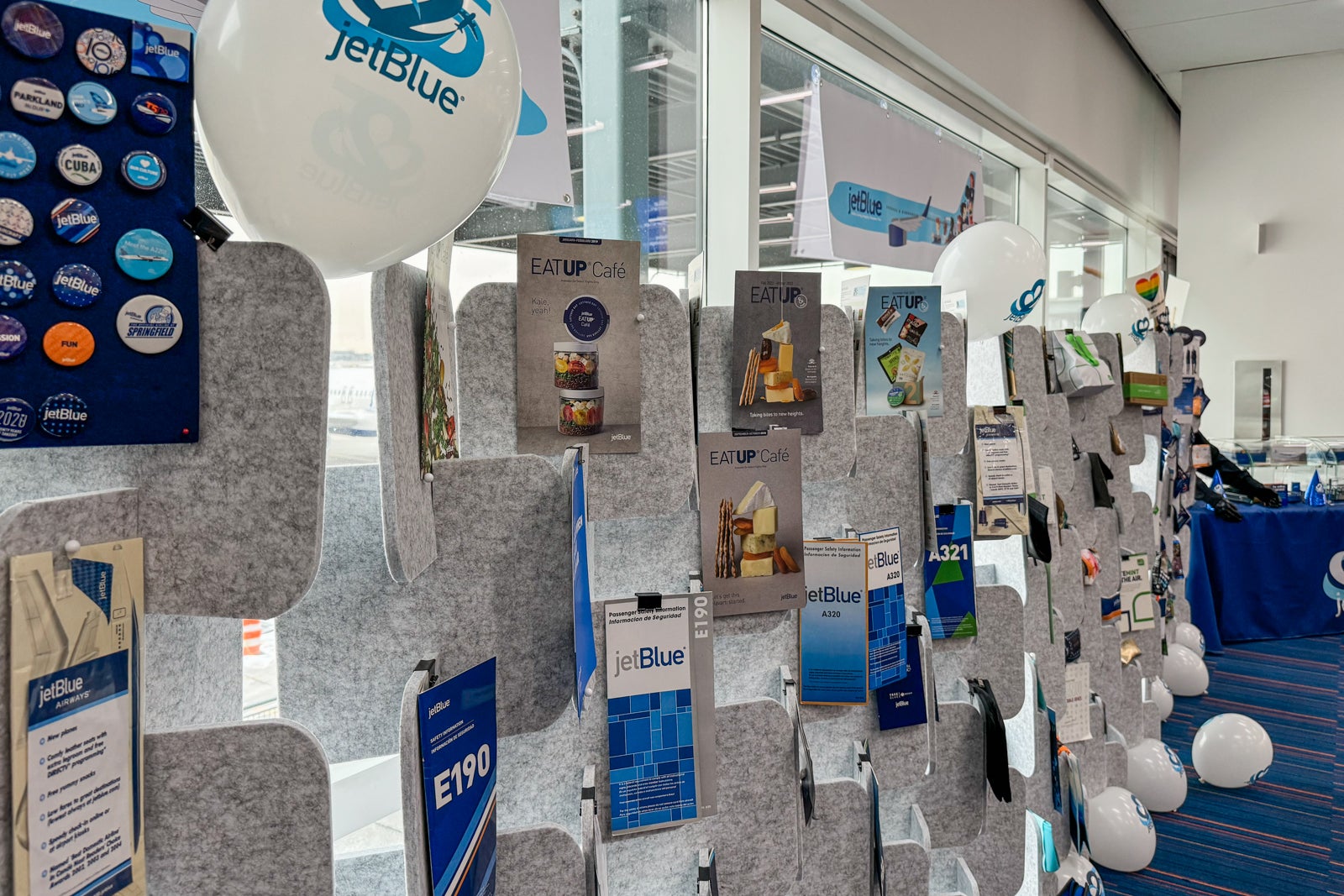
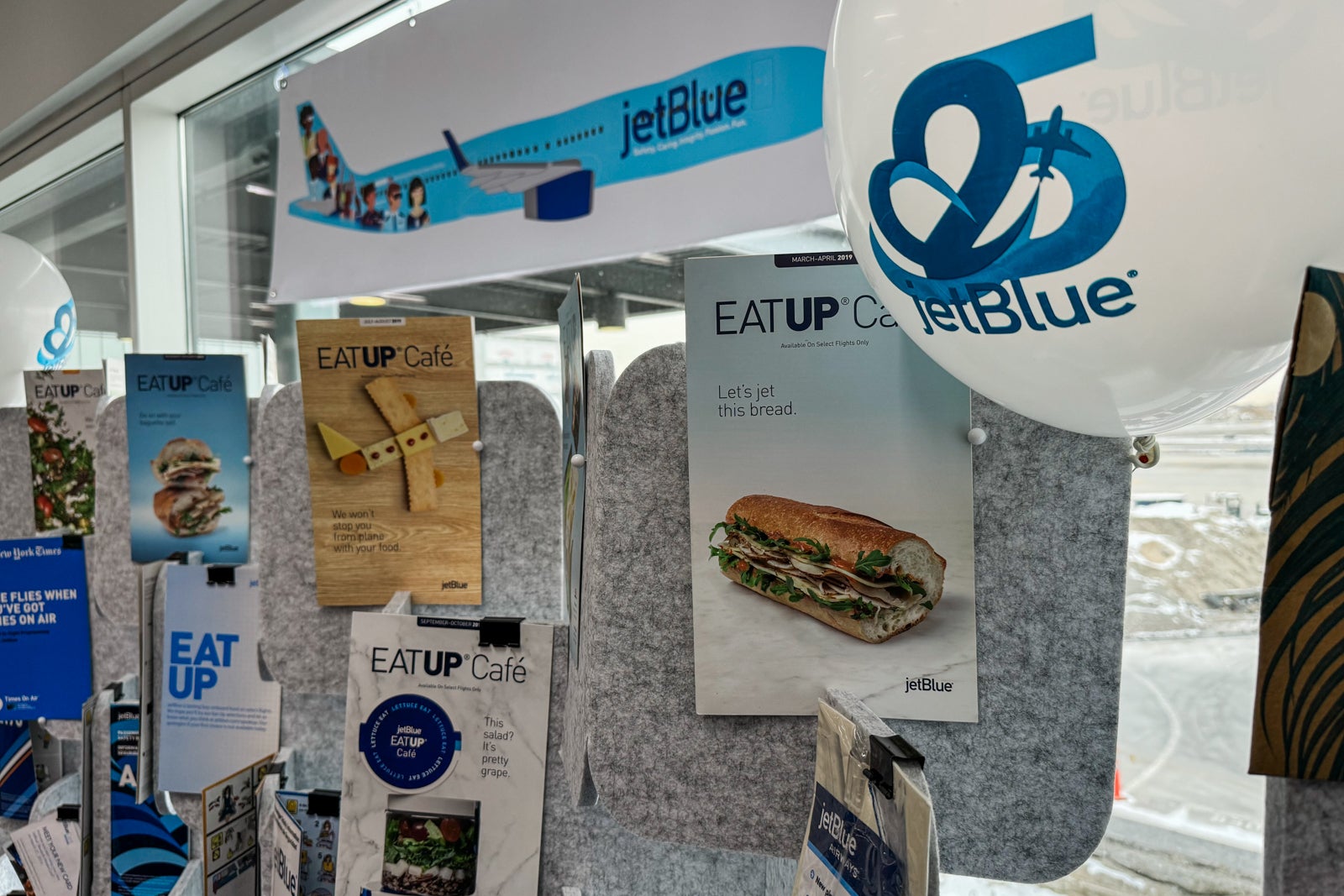
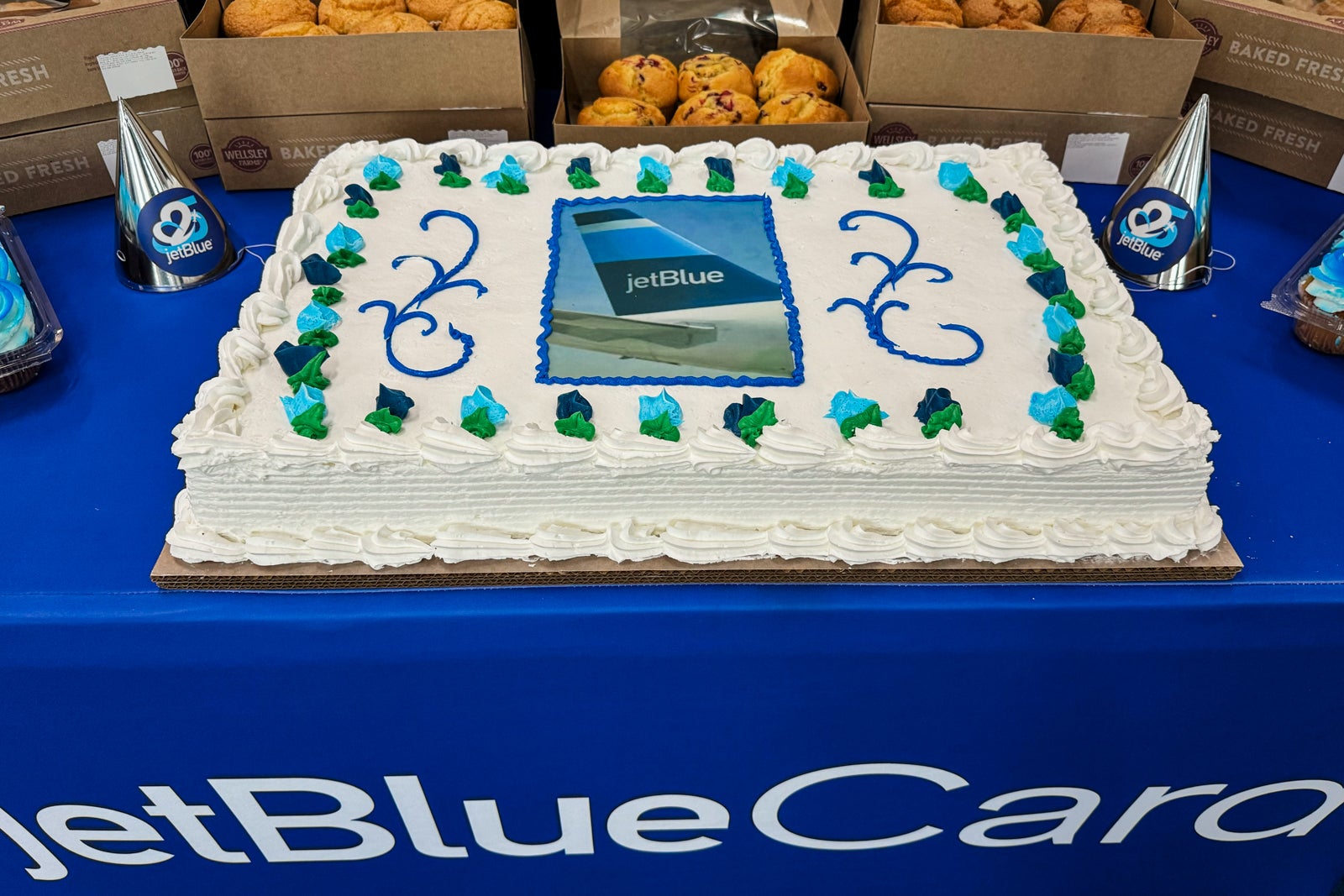
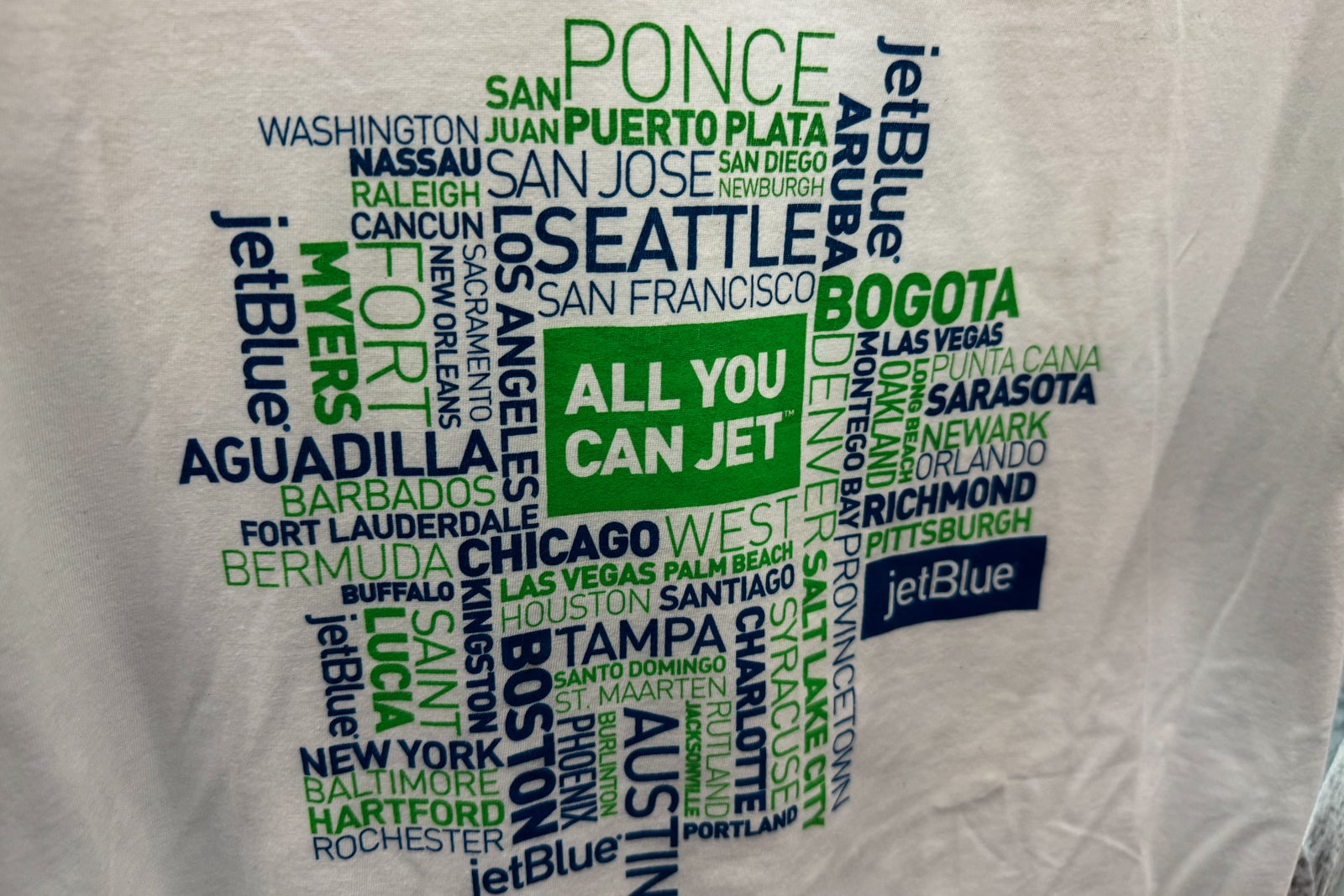
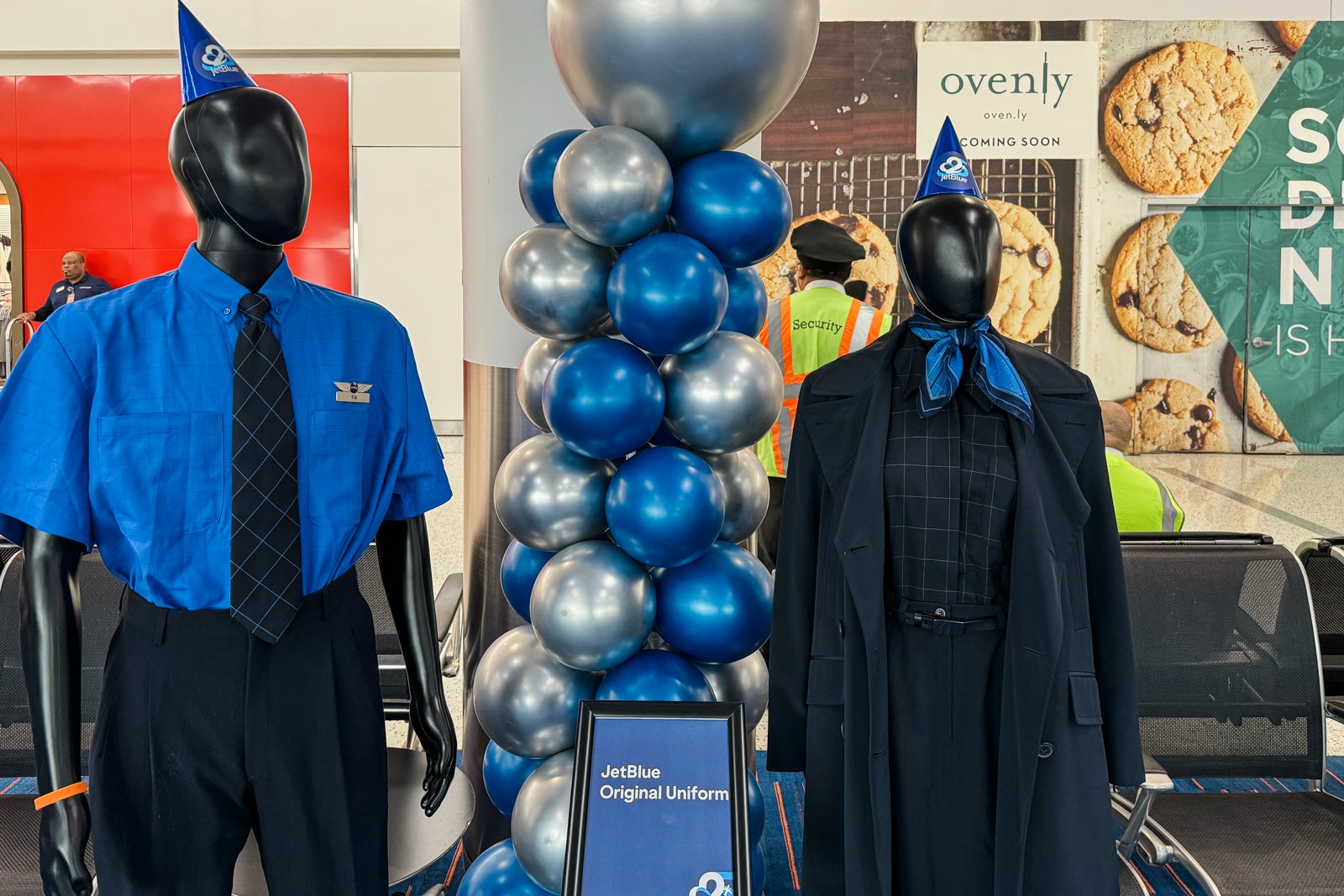
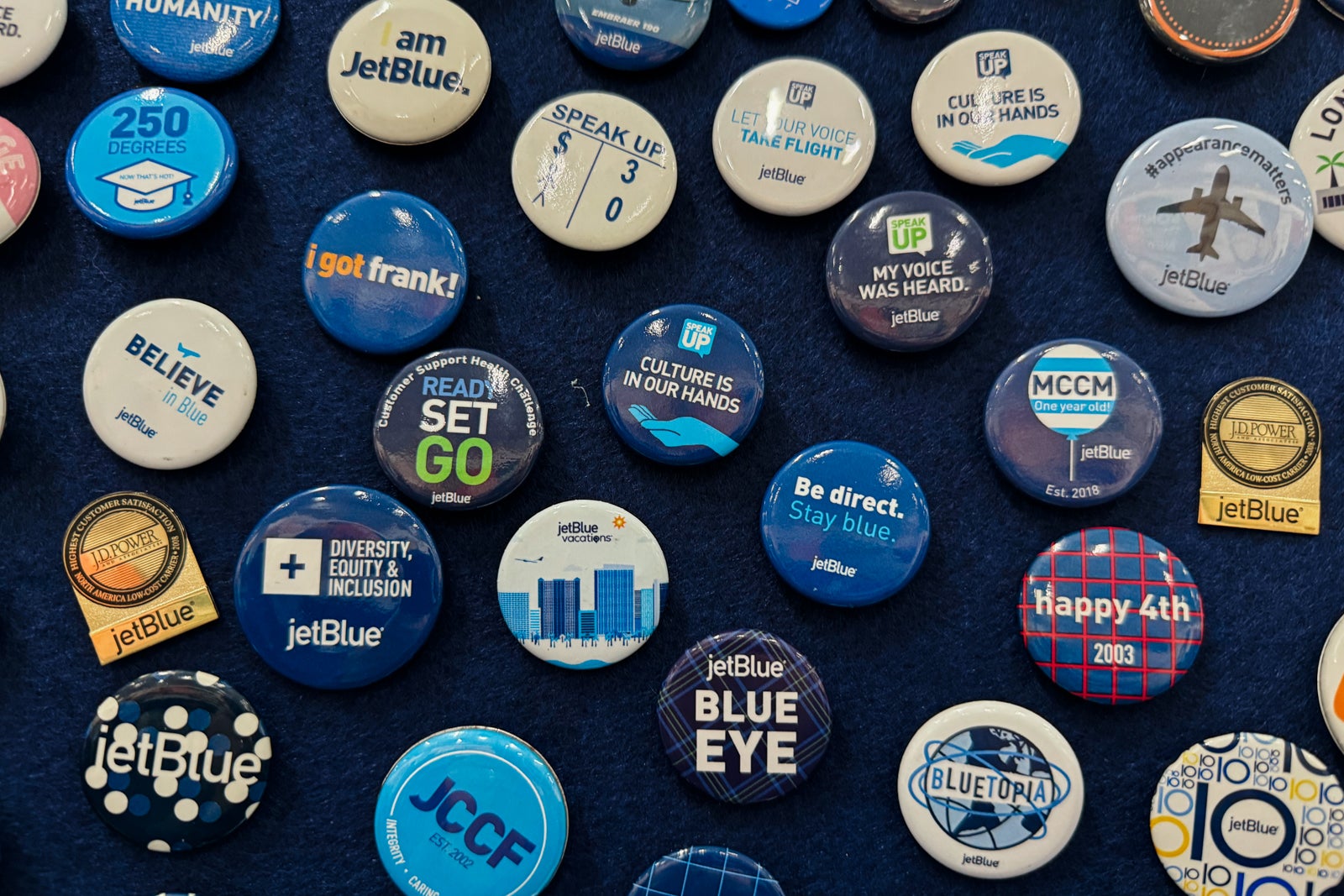
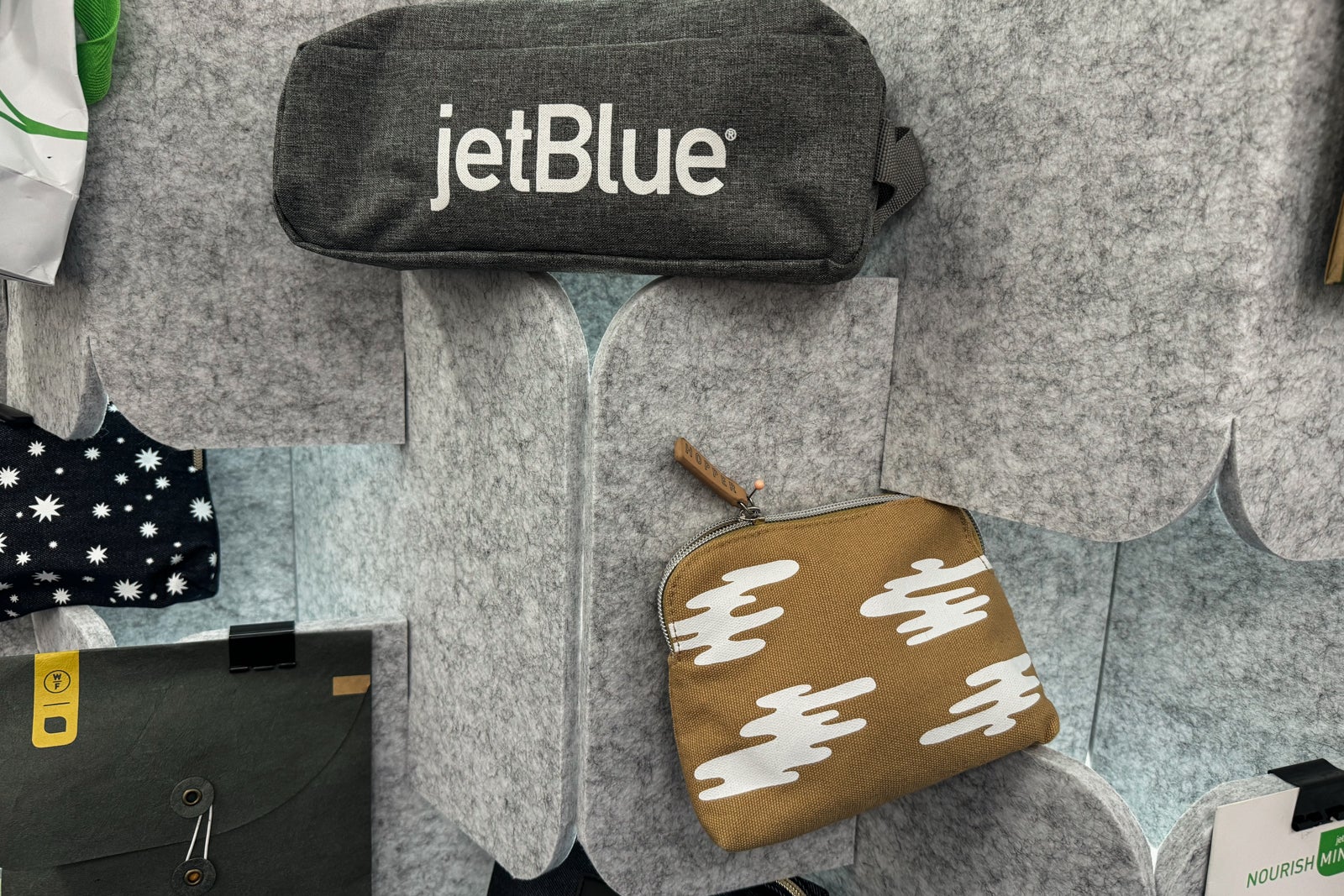
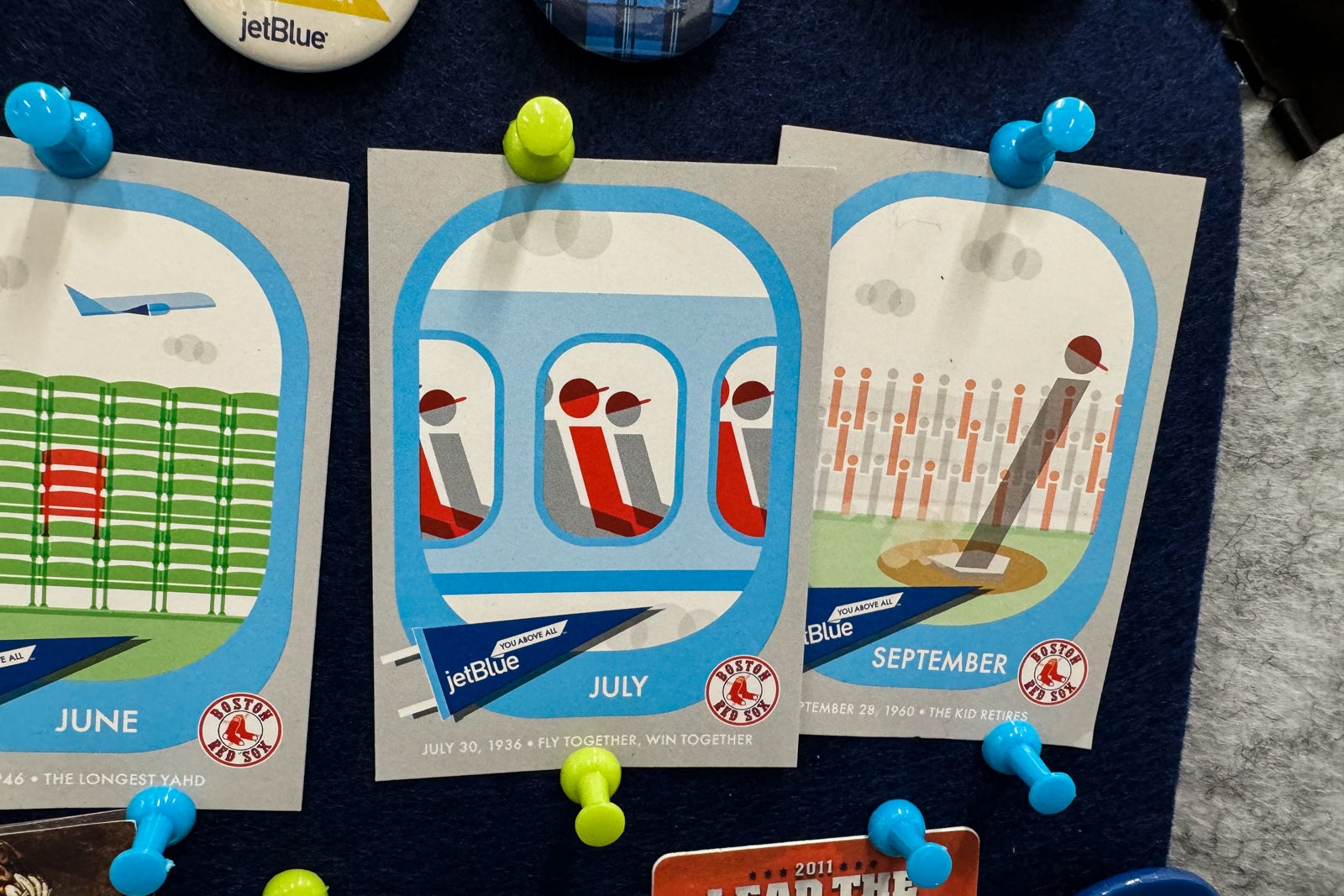
Low-cost, but far from no-frills
From the outset, JetBlue founder David Neeleman (today the CEO of startup Breeze Airways) hoped to toe the line of being low-cost airline, but with the bells, whistles, brand vibe — and slot portfolio — to be an attention-grabbing player headquartered in the New York market.
“Cheap chic was kind of our mantra,” recalled Gareth Edmonson-Jones, a founding member of the airline’s marketing team.
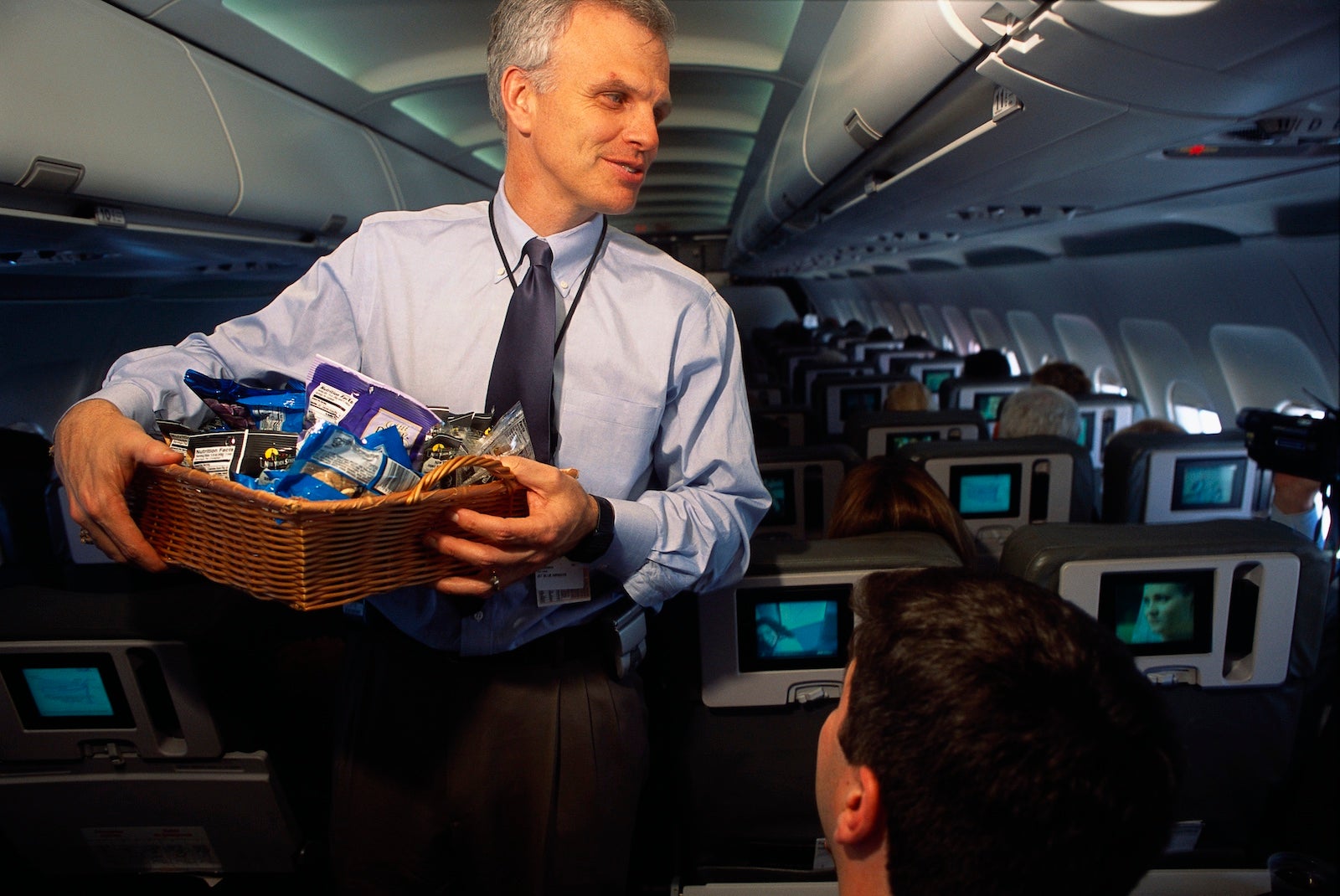
Unlike the nation’s most established low-cost airline, JetBlue assigned seats, opting against copying Southwest Airlines’ long-running (but soon-to-be-defunct) open seating policy.
But the New York City-based carrier added its own simple twists like back-to-front boarding and branded snacks — while making bigger bets that an egalitarian-structured low-cost carrier could find success rooting its operations in major Northeast markets like JFK and Boston Logan International Airport (BOS).
It all began on Feb. 11, 2000, with JetBlue Flight 1, from Buffalo Niagara International Airport (BUF) to JFK, which then continued on from JFK to Fort Lauderdale Hollywood International Airport (FLL).
Now, 25 years later, another JetBlue Flight 1 followed that same itinerary Tuesday.
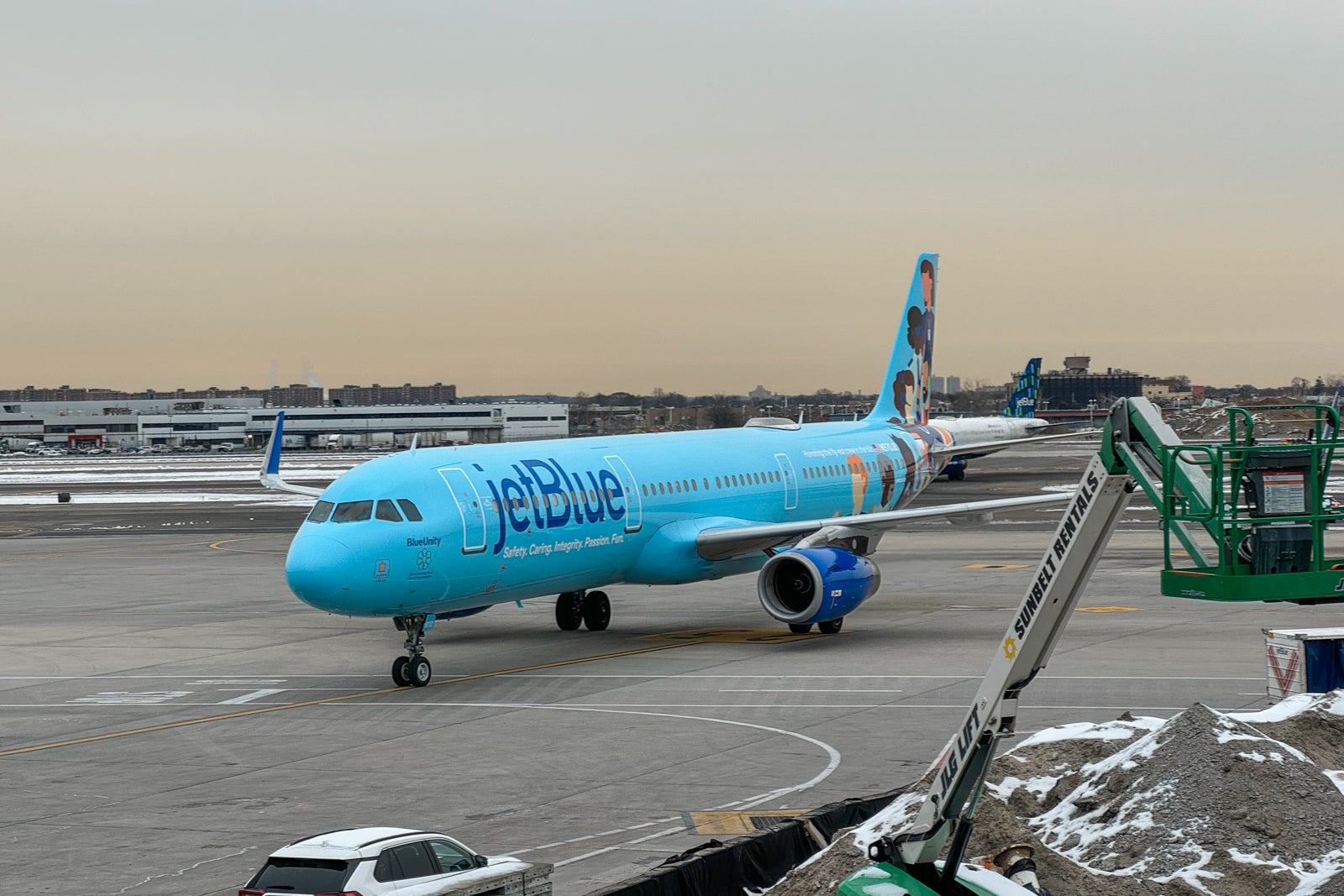
After pomp and circumstance at the gate featuring a ribbon-cutting and a proclamation from Donovan Richards, Borough President of Queens, passengers boarded the JetBlue Airbus A321 — which sported a fresh livery dedicated to the airline’s frontline workers: “This Is the ultimate team sport,” president Marty St. George said at the preflight ceremony.
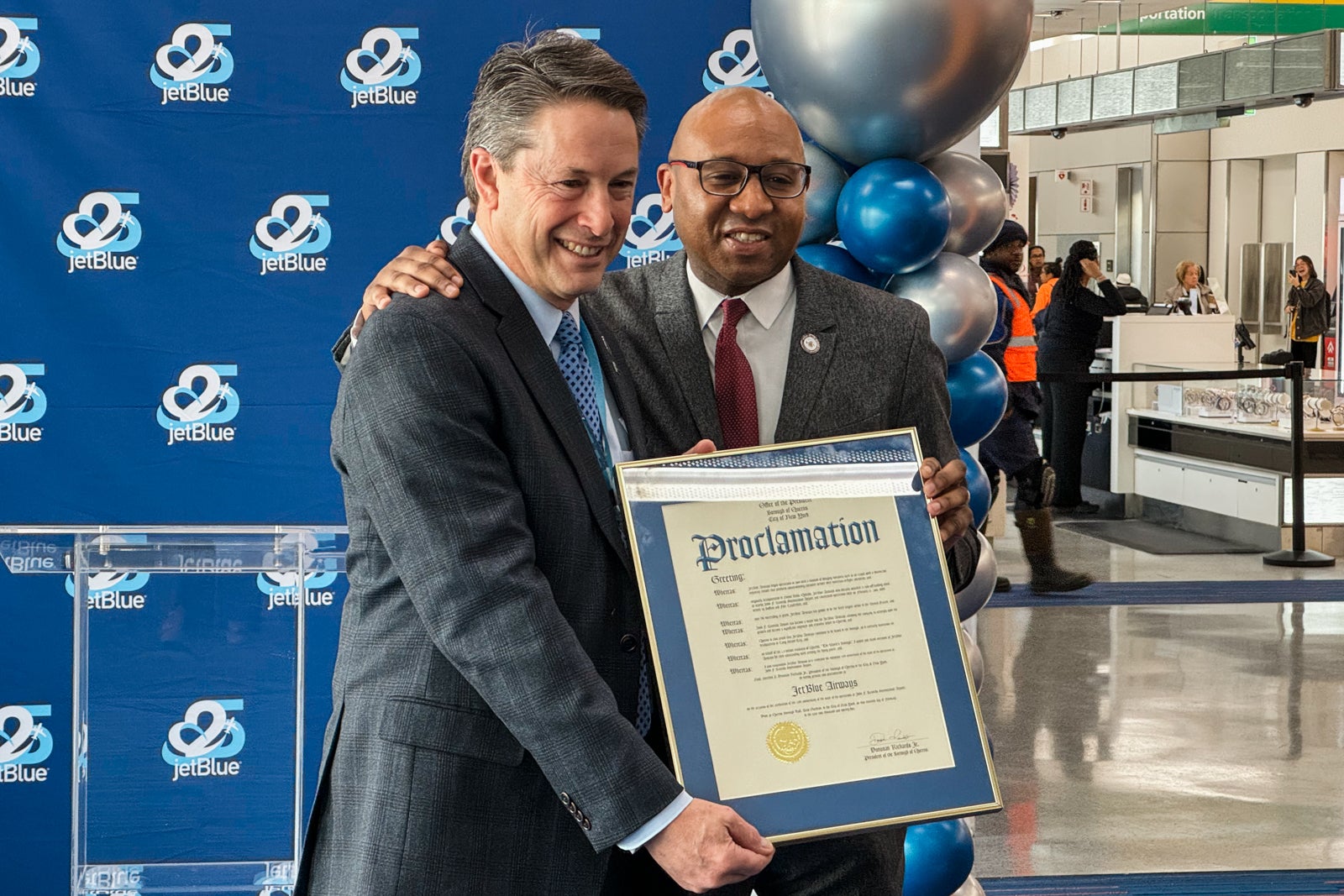
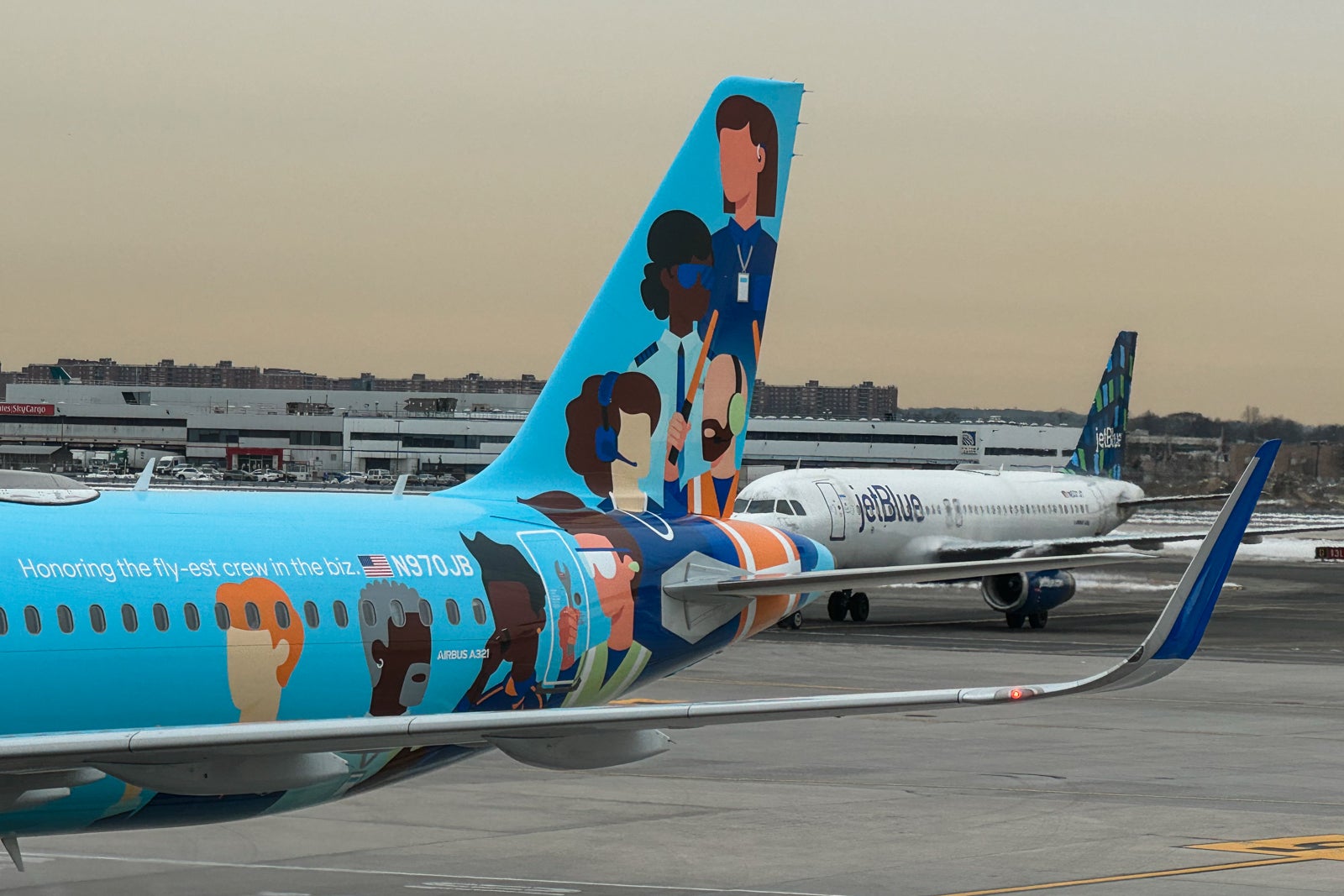
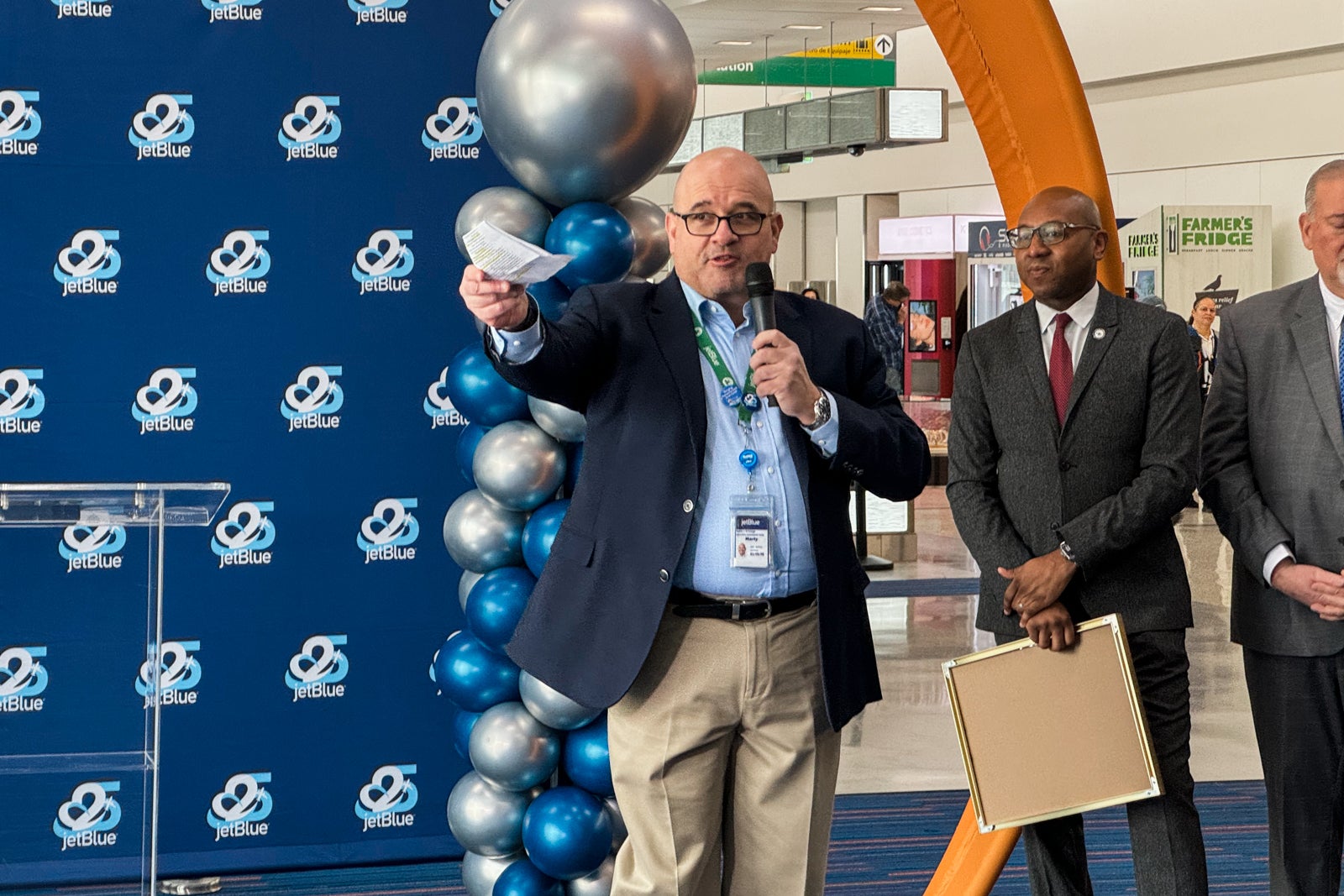
On board, passengers found a bag full of mementos marking the occasion — though those surprises paled in comparison to the free round-trip ticket the carrier offered to everyone on board.
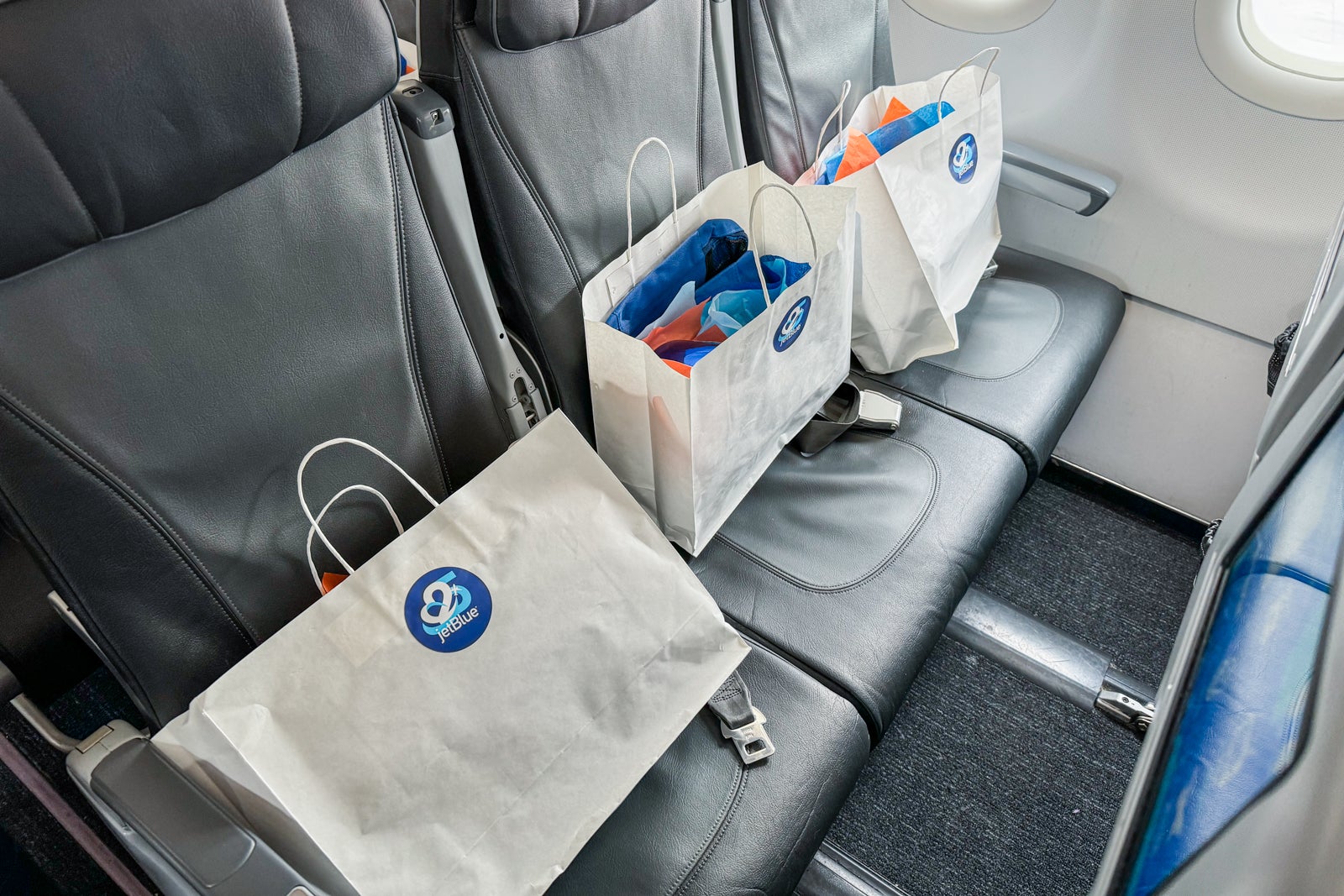
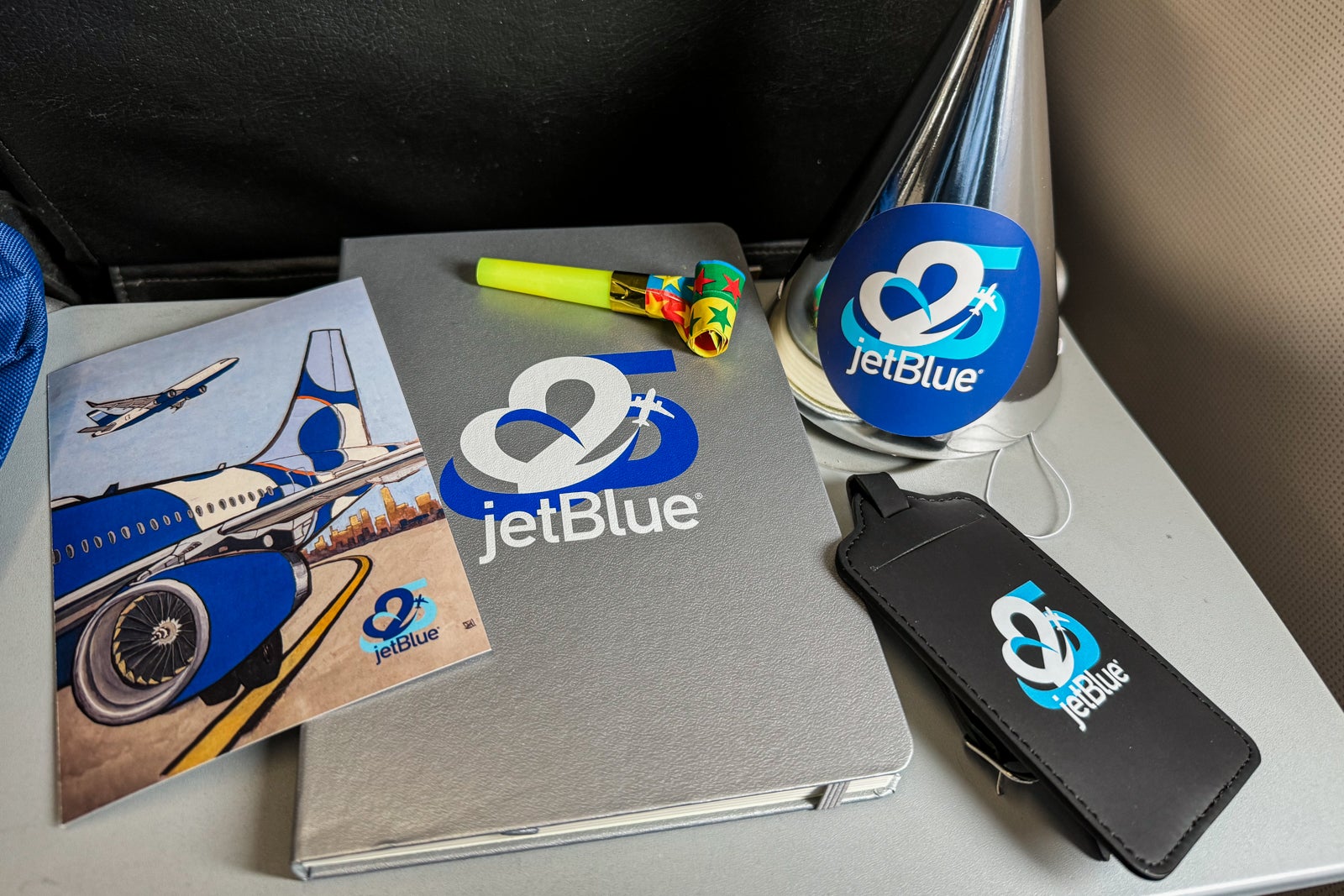
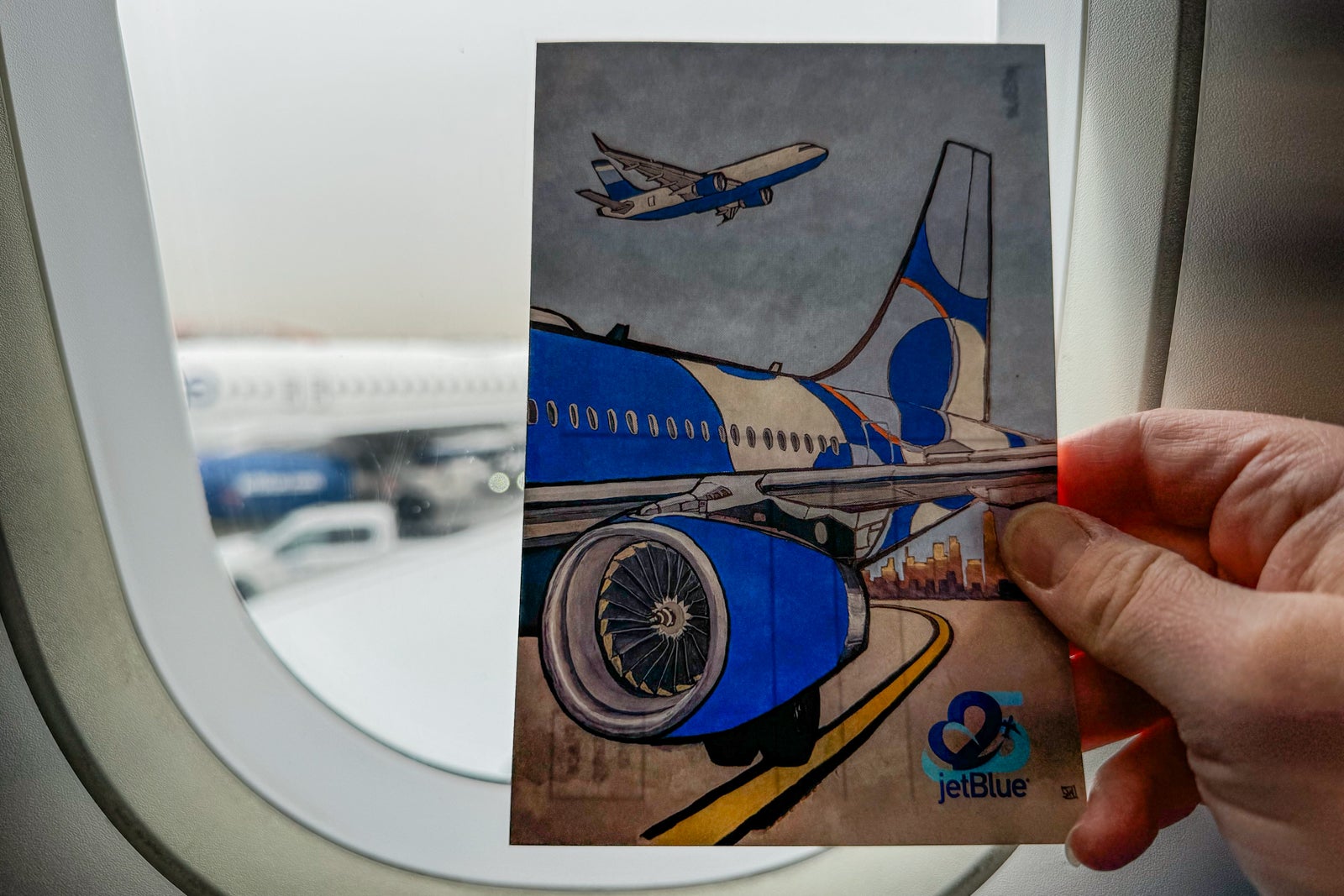
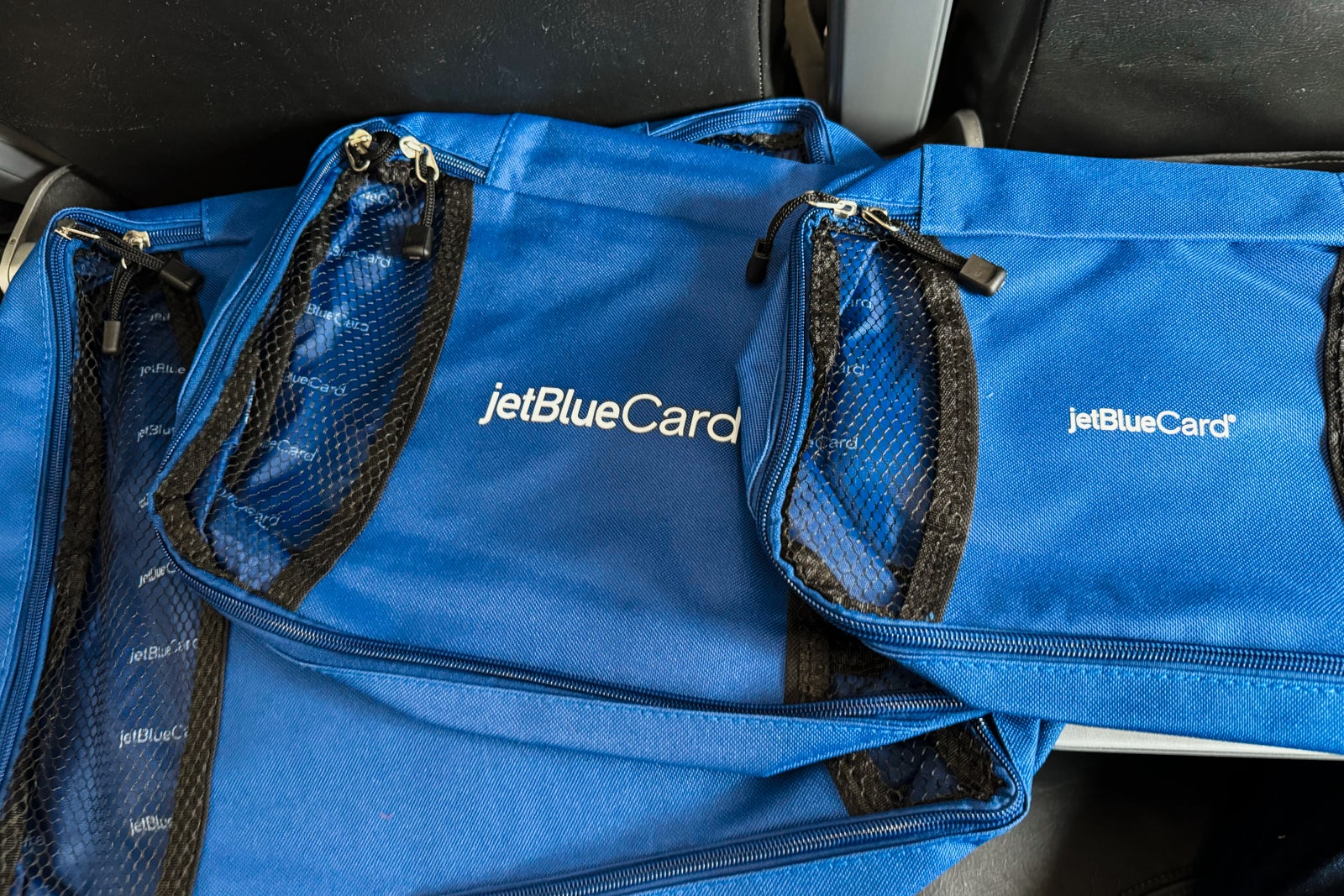
Working the flight deck and cabin: many of the same crewmembers that served the inaugural JFK-to-FLL flight in 2000.
“I was really nervous,” Newark-based flight attendant Joe Perez recalled about the flight from 25 years ago. 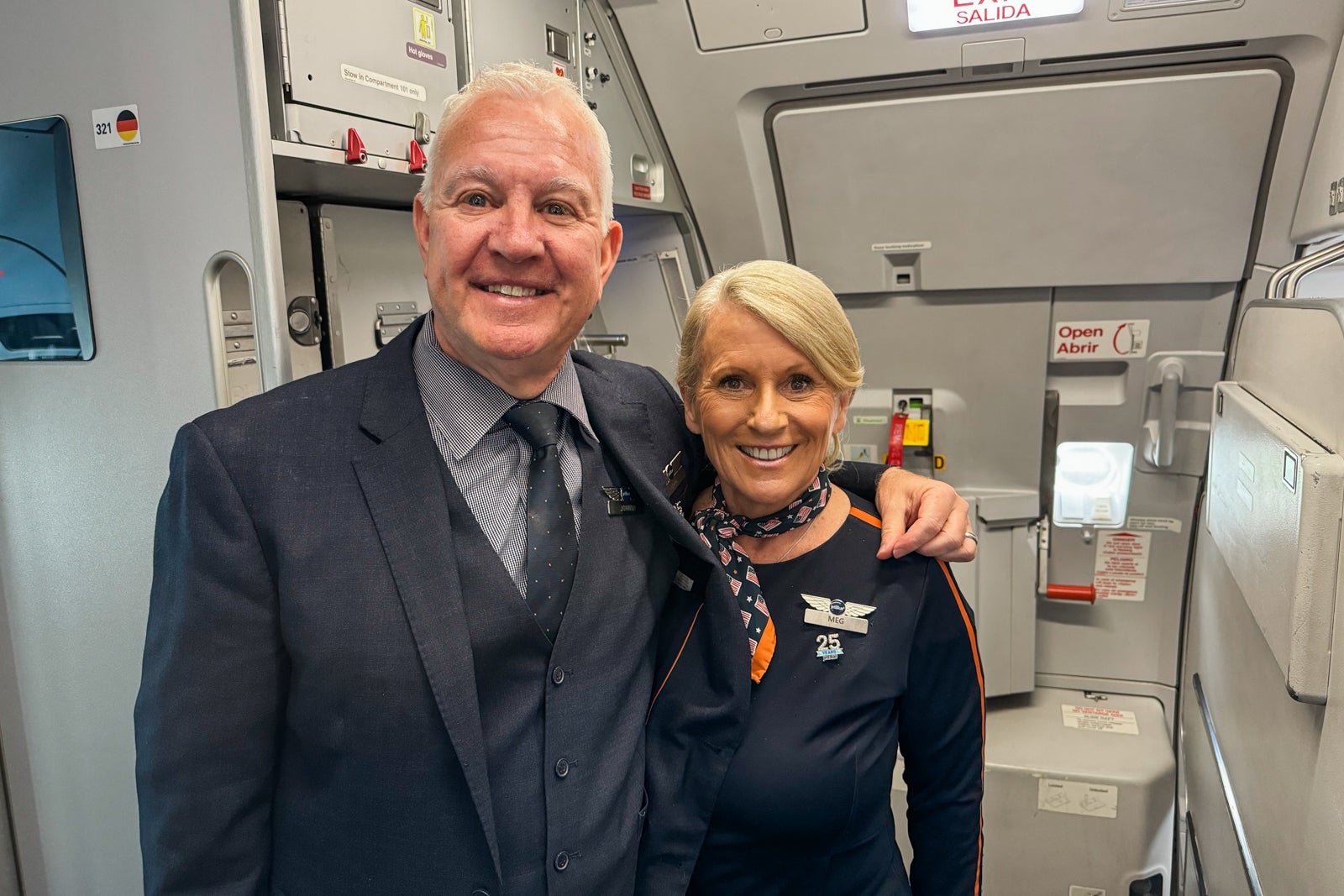
SEAN CUDAHY/THE POINTS GUY“It’s pretty surreal. None of us that have been here since the beginning … ever thought 25 years out. I don’t think we thought 25 days out,” mused Rob Land, a founding member of the company who today serves as its head of government affairs.
“We just kept doing, and kept doing, and kept watching it grow,” Land said.
Egalitarian no more
Indeed, JetBlue grew — but it also evolved.
Once known for uniformity on its planes — which flew almost exclusively domestic flights – today the carrier sports a bona fide international business class cabin with its premium Mint seats on dozens of jets.
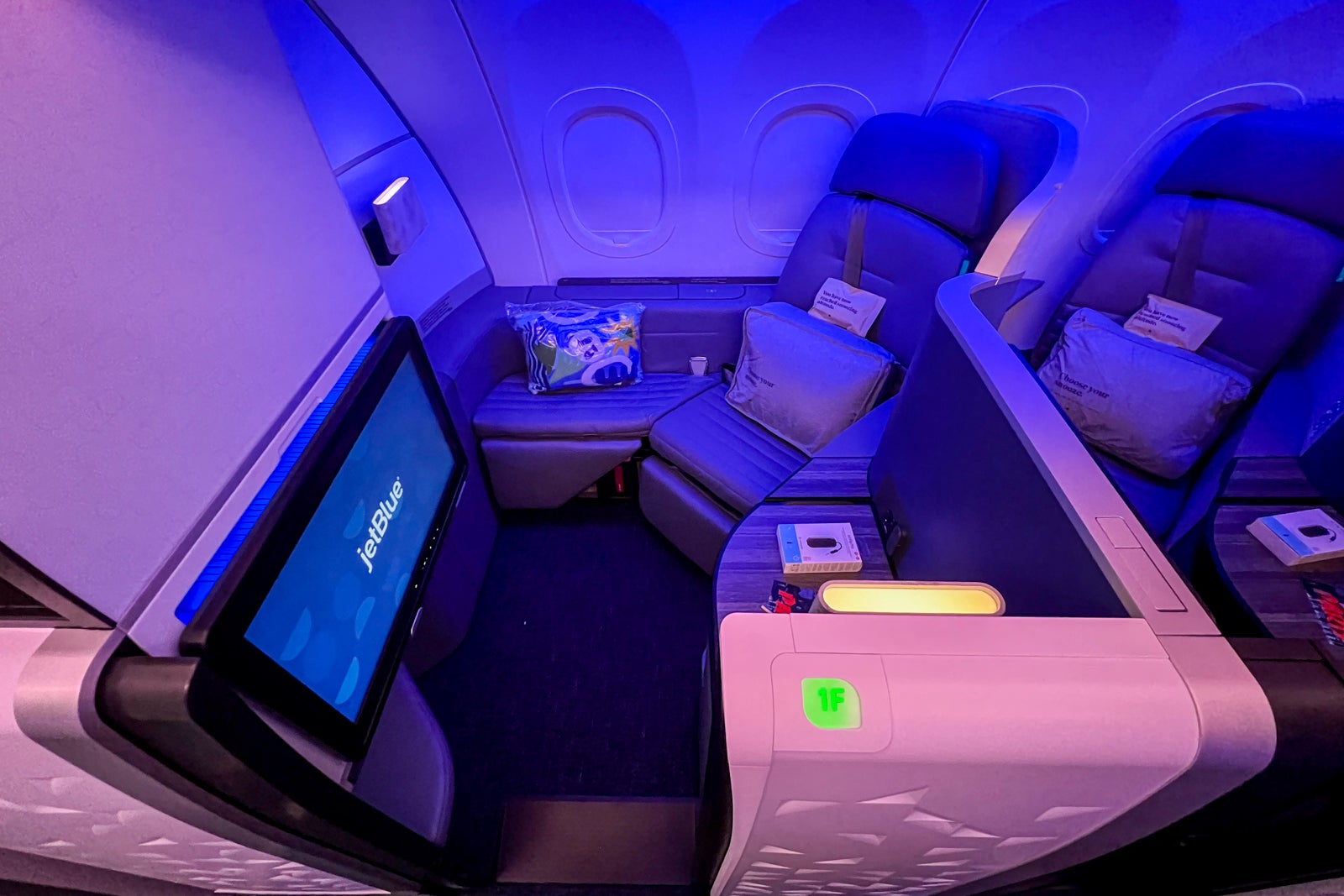
The airline now flies to Europe, having launched service in recent years to London, Paris, Amsterdam, Dublin and Edinburgh. Madrid is up next, later this year.
Like the larger legacy carriers, the JetBlue of 2025 relies also heavily on its loyalty program; look no further than the application for a cobranded TrueBlue credit card passengers on board the milestone flight found in their goodie bags.
Read more: JetBlue’s new premium credit card has launched — should you jump on board?
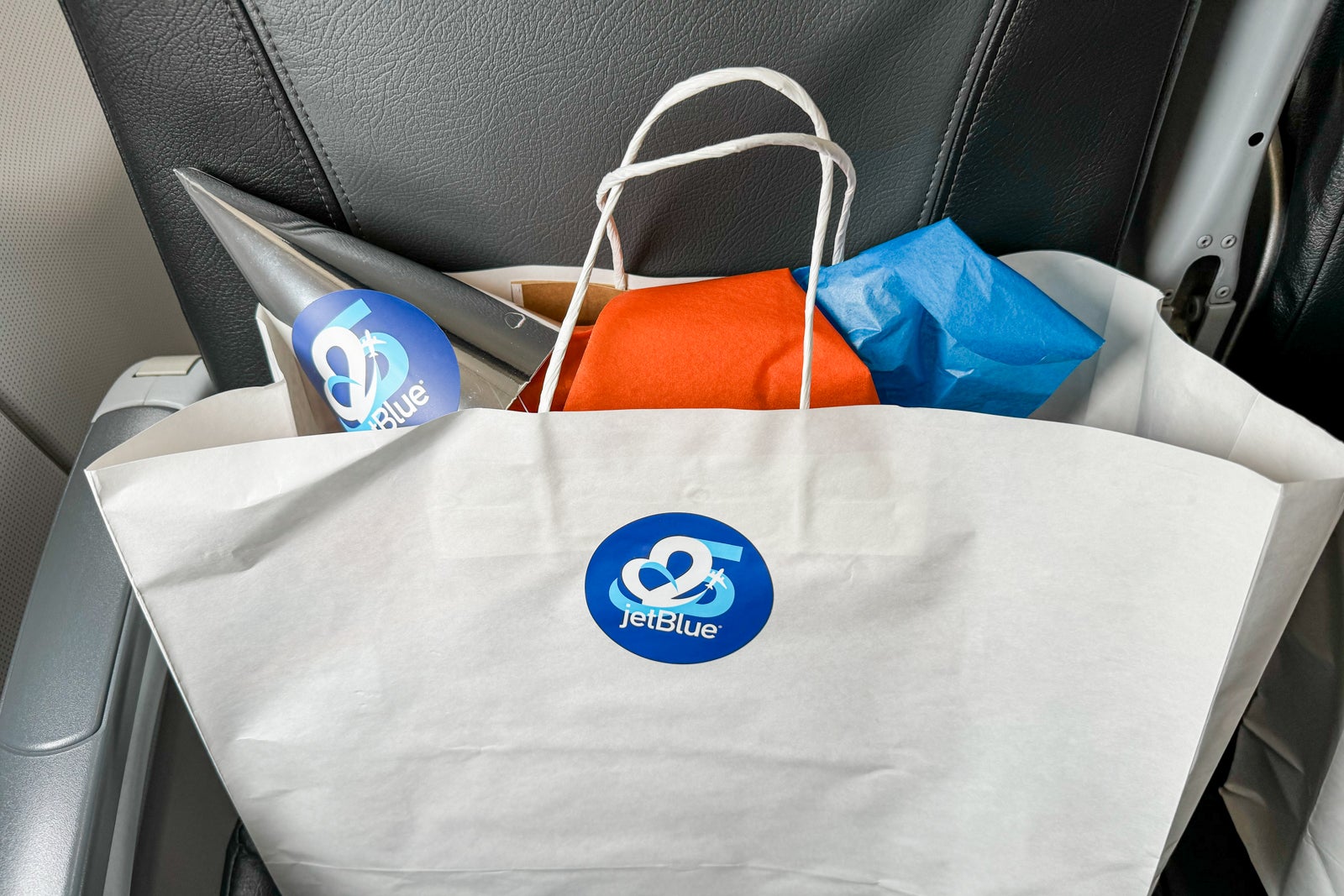
Today, some in the industry credit JetBlue’s arrival on the scene 25 years ago with inspiring on-board upgrades at many of its competitors this century.
You don’t have to look hard, today, to see the virtual arms race among carriers looking to outdo one another with new cabin technology, services and seats.
“I think JetBlue taught everybody how to do it,” Edmonson-Jones said. “It was the impetus to make everything better.”
A turbulent few years
Yet, JetBlue’s first quarter-century wasn’t without its challenges — and not just the February 2007 operational meltdown that inspired the first known YouTube apology video in U.S. airline history, and a customers bill of rights that followed.
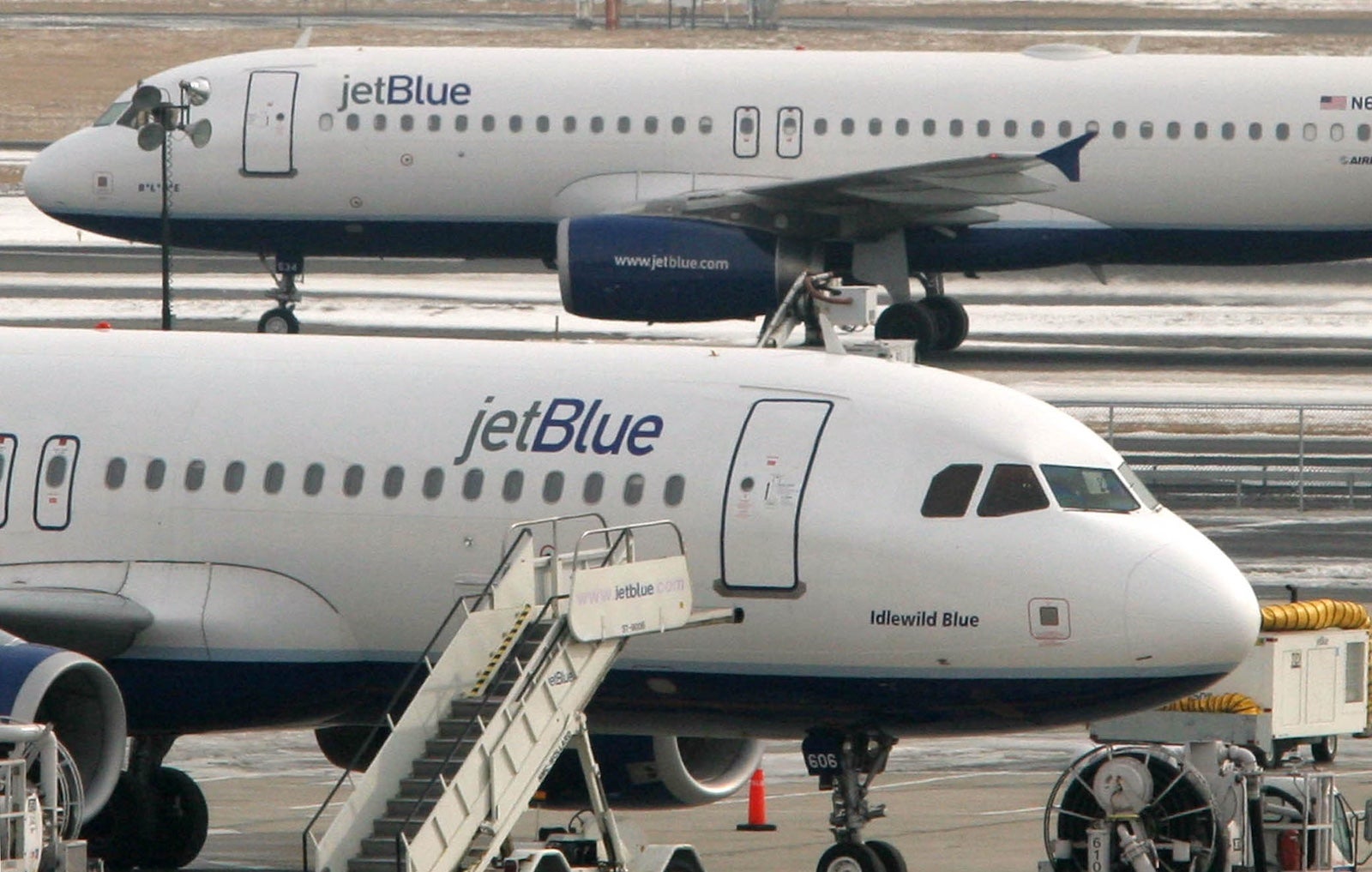
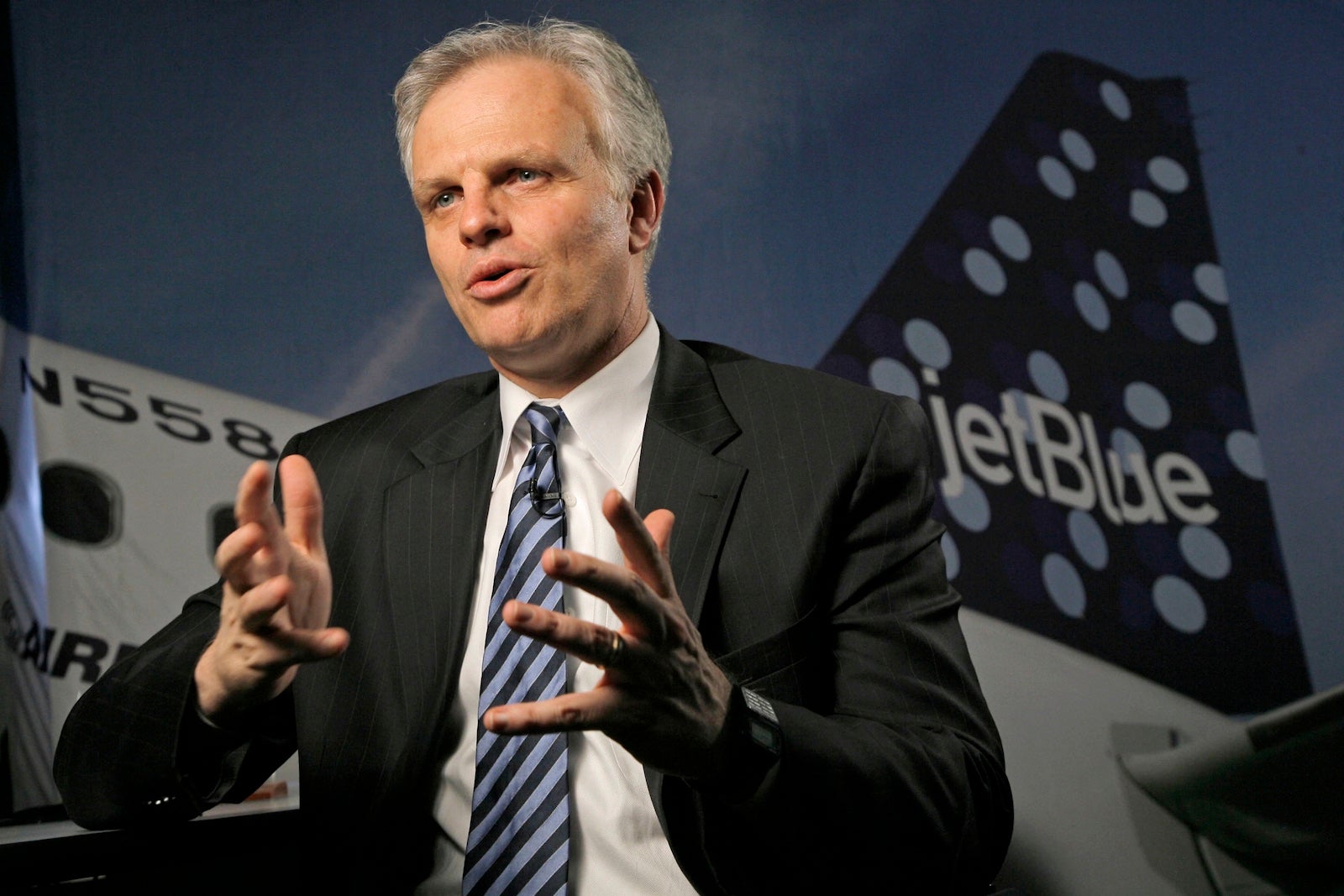
In recent years, JetBlue has faced its share of hurdles.
The company hasn’t turned a profit since before the coronavirus pandemic. Its big bets of recent years — an alliance with American Airlines and a merger with Spirit Airlines — both saw their demise in federal court.
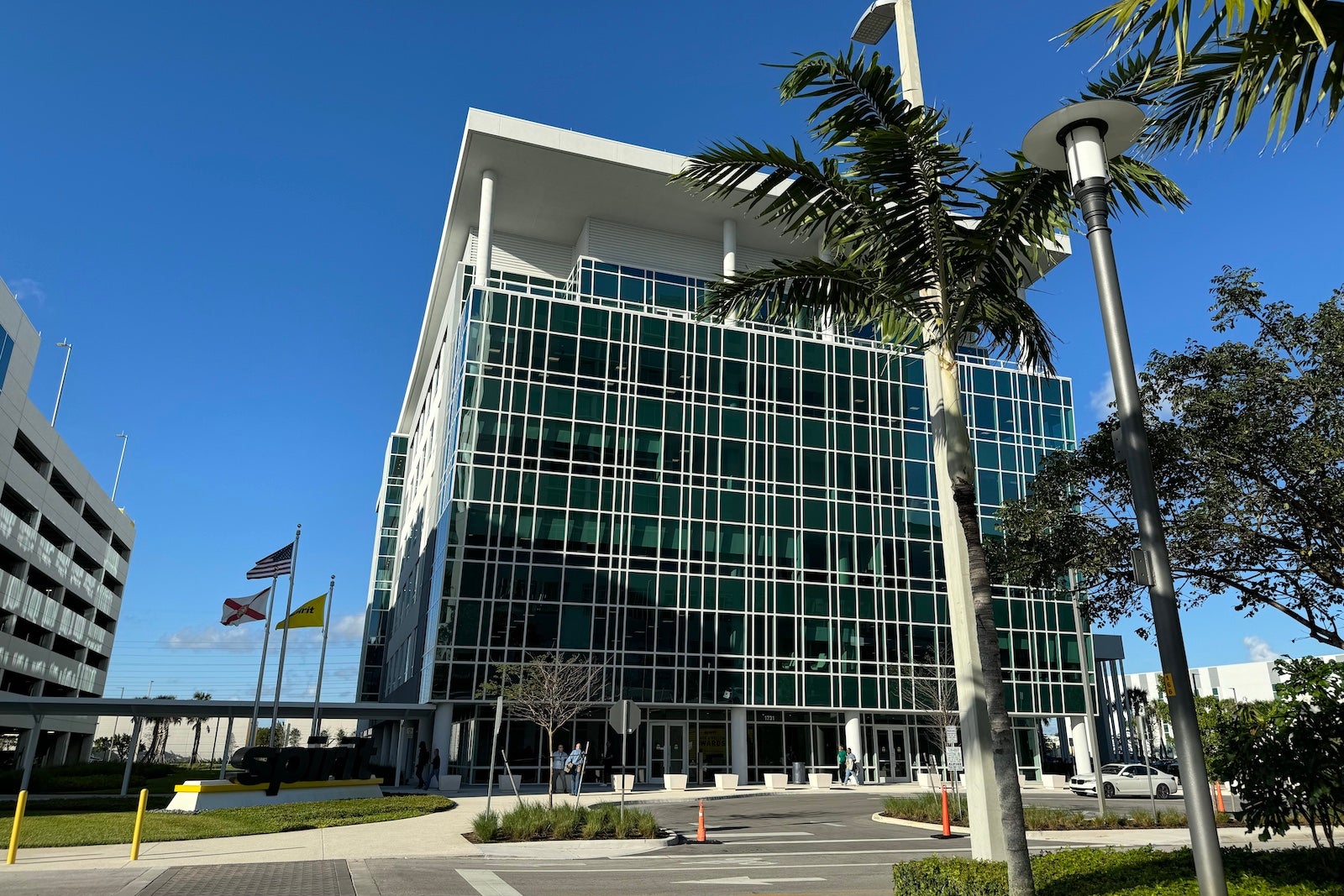
A sizable portion of its fleet has faced prolonged grounding due to an engine issue at a third-party supplier — a problem facing many airlines, globally.
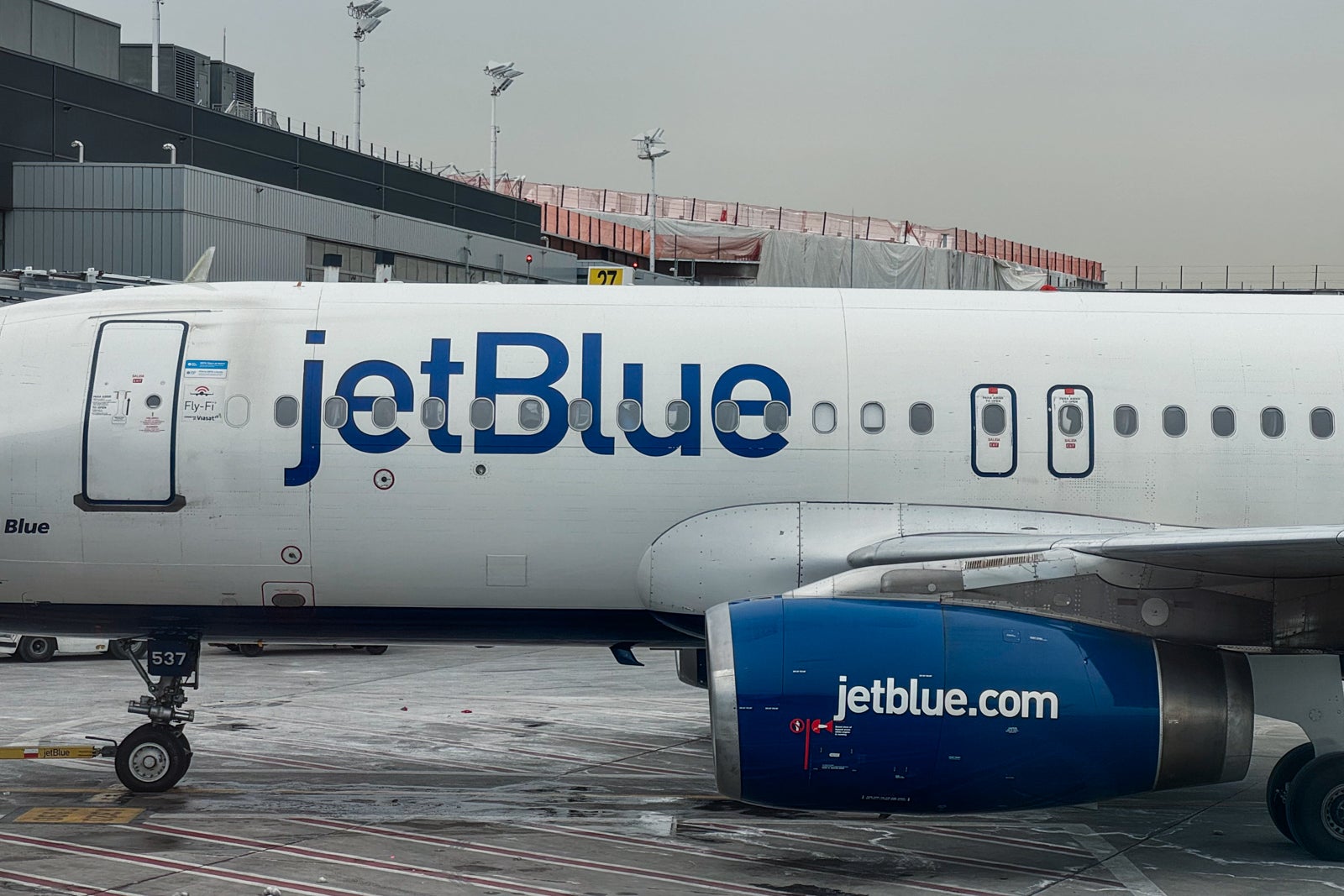
Its reputation for operational reliability hasn’t exactly been a feather in its cap in recent years, either, owing in part to its deep ties to the nation’s most congested airspace, where air traffic control-fueled delays are common (though a 25-minute delay for Tuesday’s milestone flight was due to a minor maintenance issue).
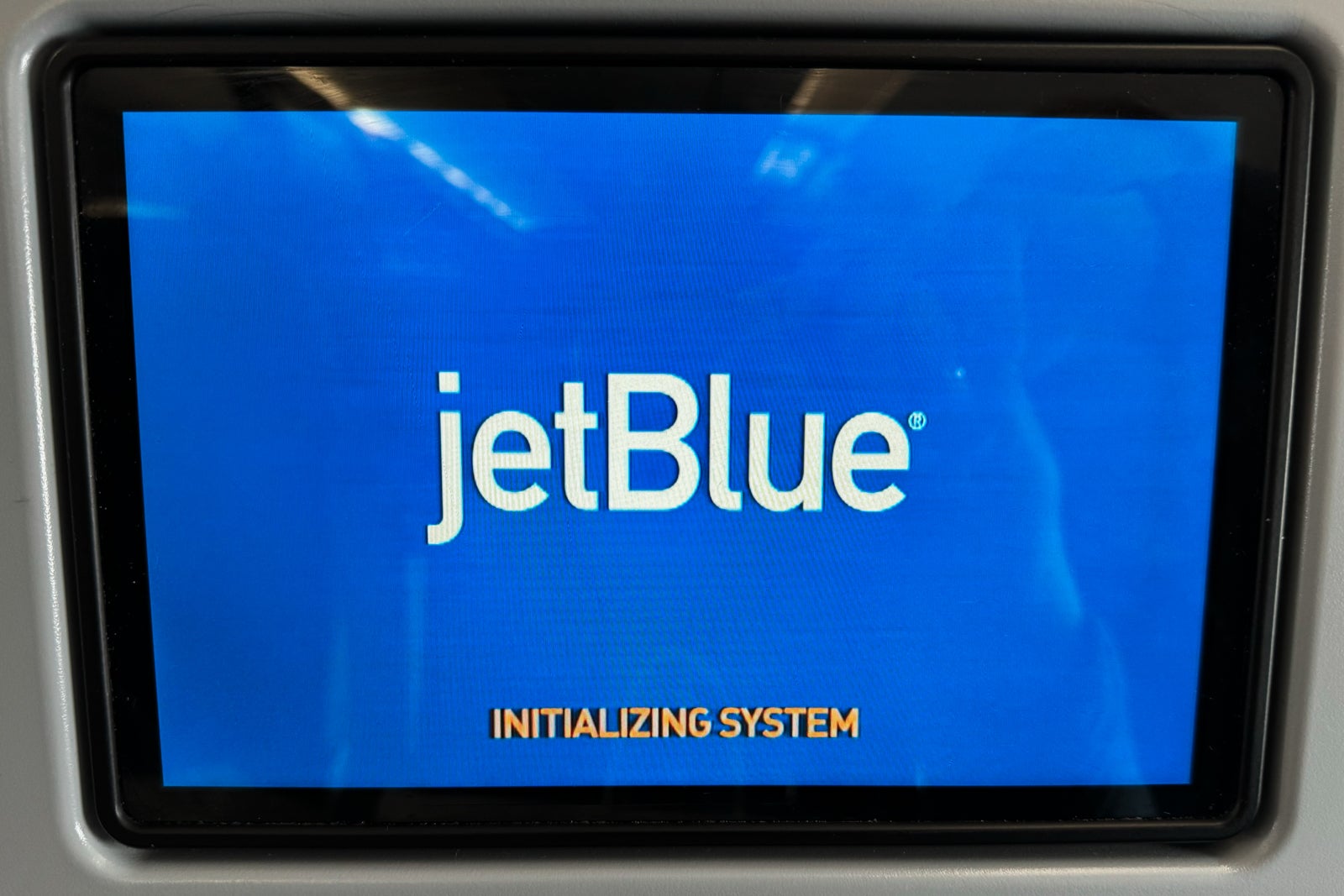
Meanwhile, in the eyes of some industry analysts, the carrier has seen the innovative streak that defined its early years challenged — often surpassed – by its competitors.
“Delta, American and United are all much larger than Jetblue, much financially stronger,” Harteveldt said.
“The challenge is, what does JetBlue do going forward? How does it grow?” Hareveldt continued, alluding to sweeping network cuts the airline made last year, which saw it double down on East Coast leisure traffic in an effort to purge unprofitable routes.
“If you don’t live in Boston, New York City or Fort Lauderdale,” Harteveldt said, “JetBlue is pretty much useless to you as a traveler.”
Looking forward
Yet, the carrier remains optimistic about the strategy that will define its 26th year and beyond.
Last year, JetBlue unveiled a sweeping plan to return the company to profitability, which included hundreds of millions of dollars worth of investments into the premium options that travelers are craving en masse.
That’ll start with the airline’s first-ever airport lounge at JFK, slated to open by the end of 2025. A second in Boston will open shortly after.
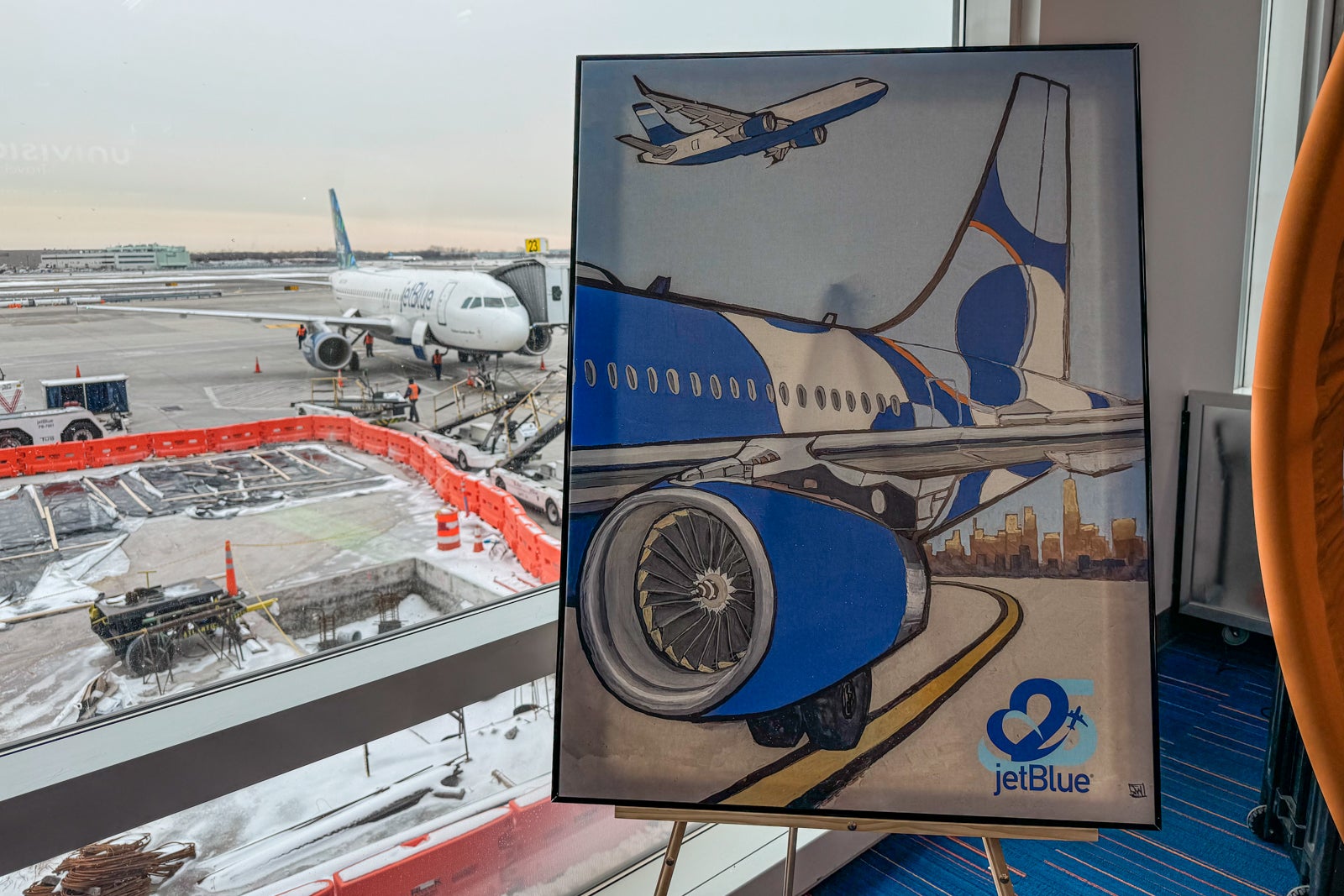
Next year, the carrier will debut its domestic first-class cabin. The new recliners will eliminate a key gap in its product offerings on planes that don’t sport its Mint cabin.
Yet, the premium cabin will also cement the notion that JetBlue is a changed airline from the one that launched 25 years ago this week — no longer solely focused on its coach (or “core”) cabin.
“We have evolved. We’ve added products — only because we’ve sensed people want them. And when we add them, there’s great demand,” Land said, speaking to TPG at 37,000 feet, just before the aircraft began its initial descent into Fort Lauderdale.
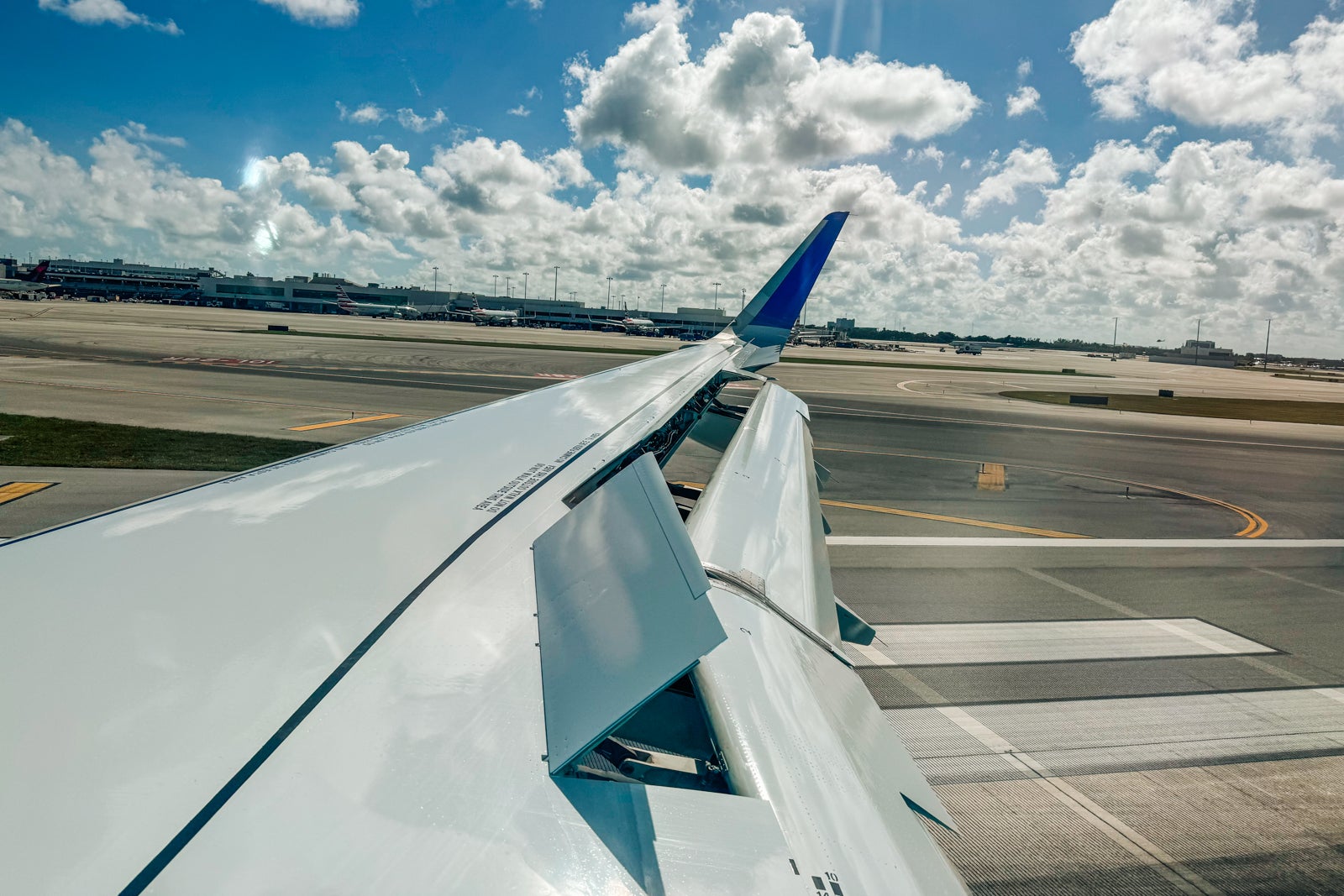
“But I’m proud we didn’t [evolve] at the expense of basically screwing people,” Land added. “Even the person on this flight, right now, in what is deemed the ‘least desirable seat,’ I would stack up against any airline’s most desirable coach seat.”
Time will tell how that philosophy, combined with new investments and products, will perform in the airline’s next 25 years.
Related reading:
- When is the best time to book flights for the cheapest airfare?
- The best airline credit cards
- What exactly are airline miles, anyway?
- 6 real-life strategies you can use when your flight is canceled or delayed
- Maximize your airfare: The best credit cards for booking flights
- The best credit cards to reach elite status
- What are points and miles worth? TPG’s monthly valuations











































